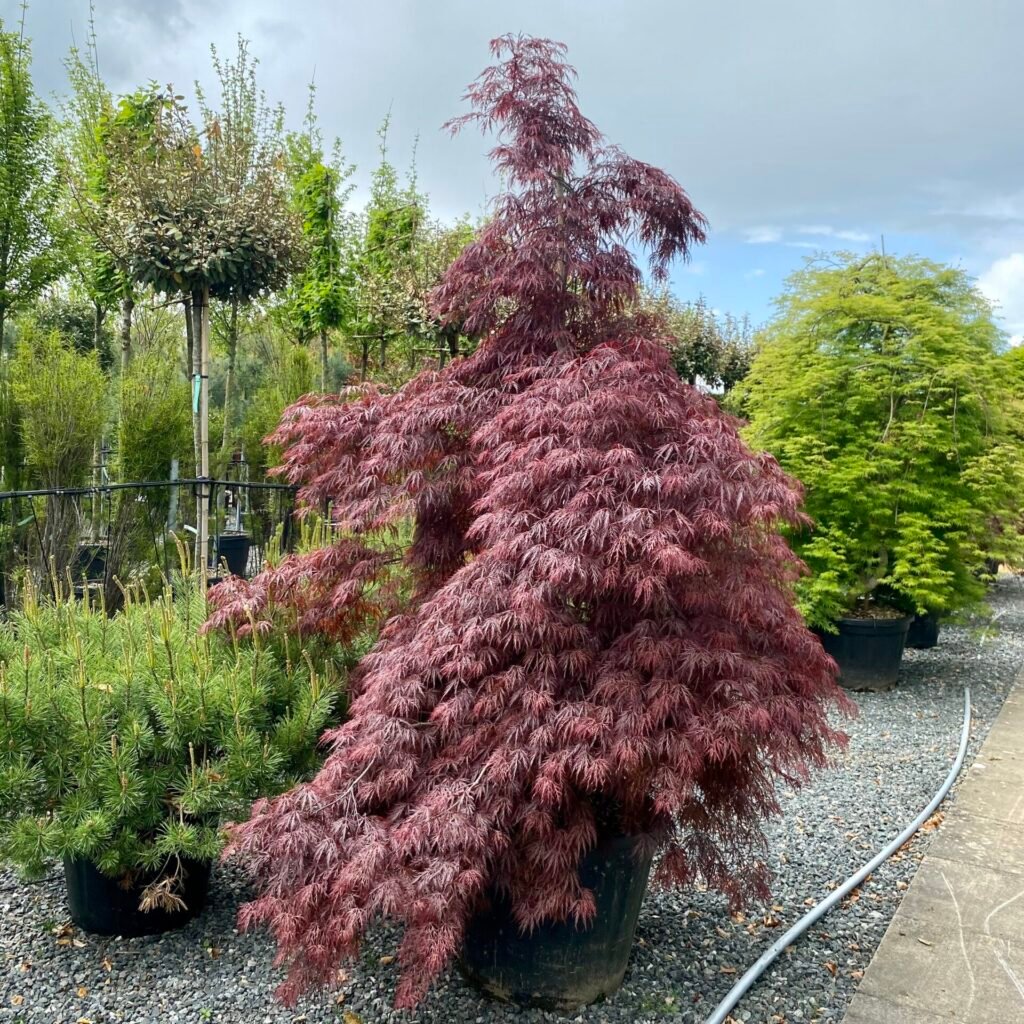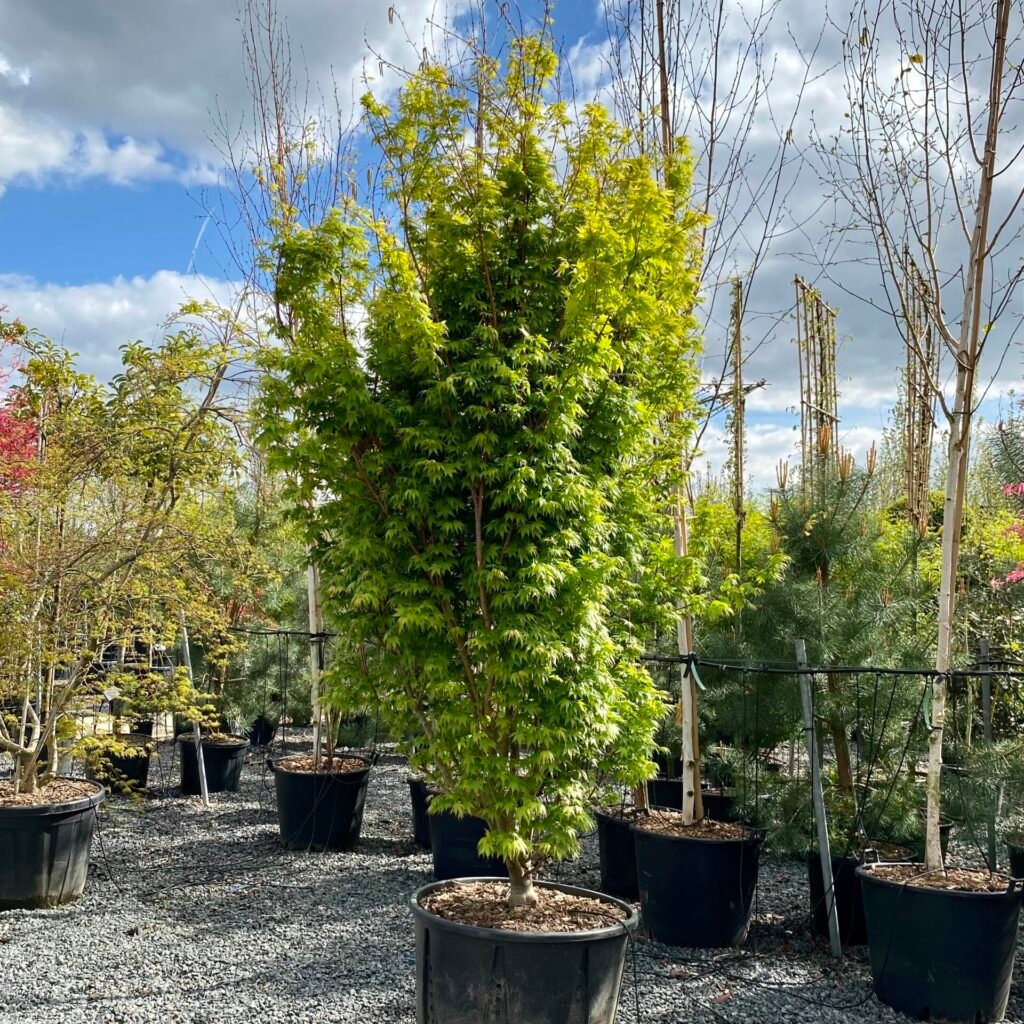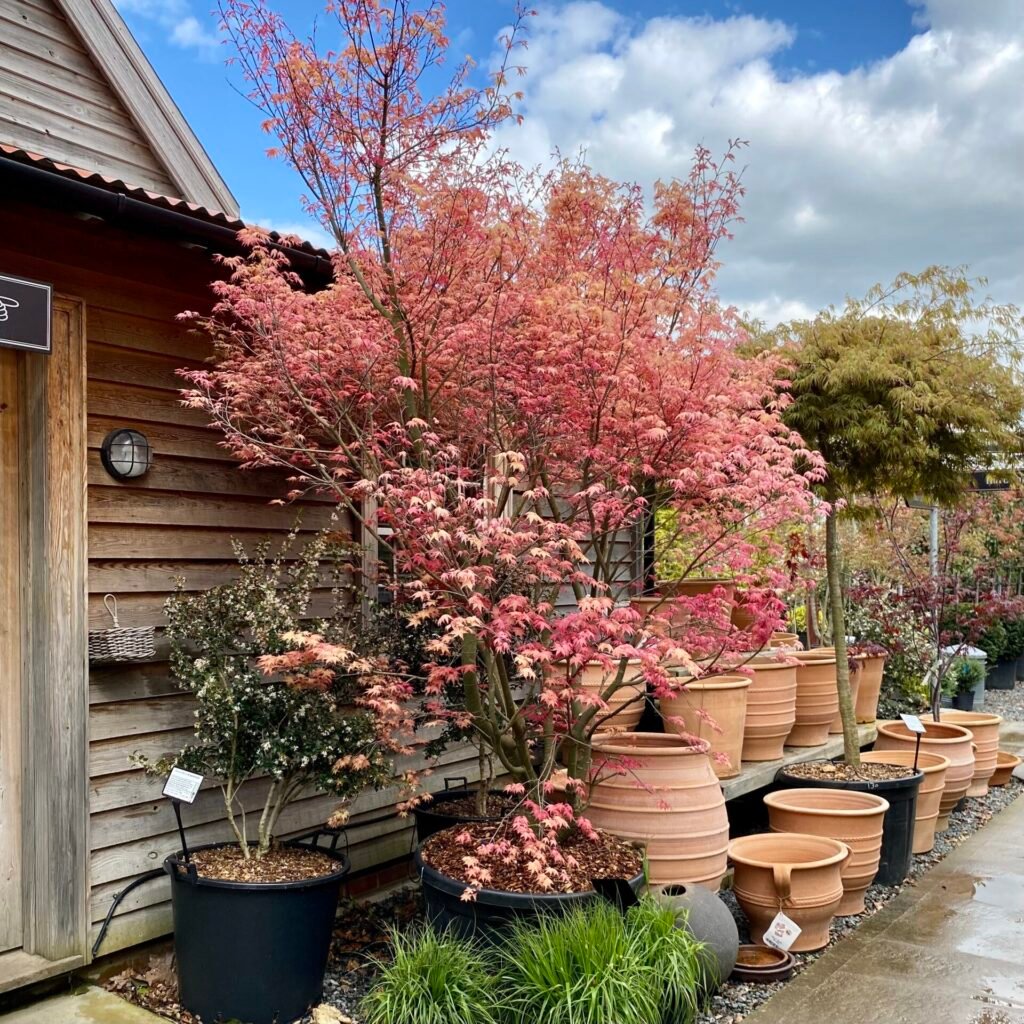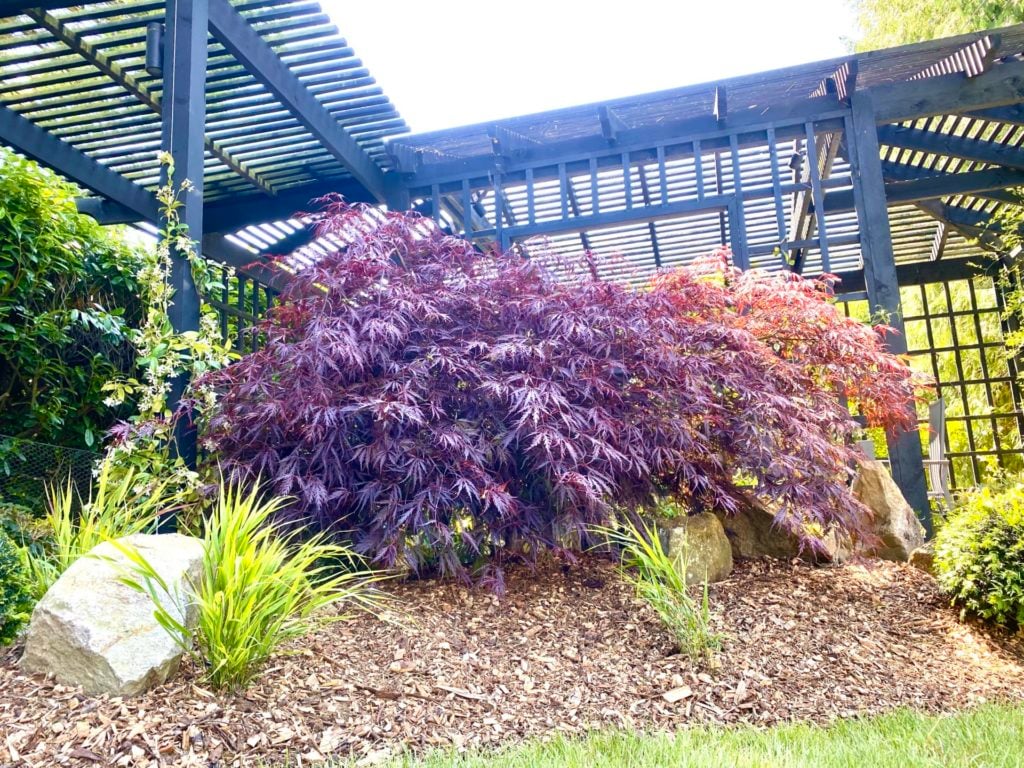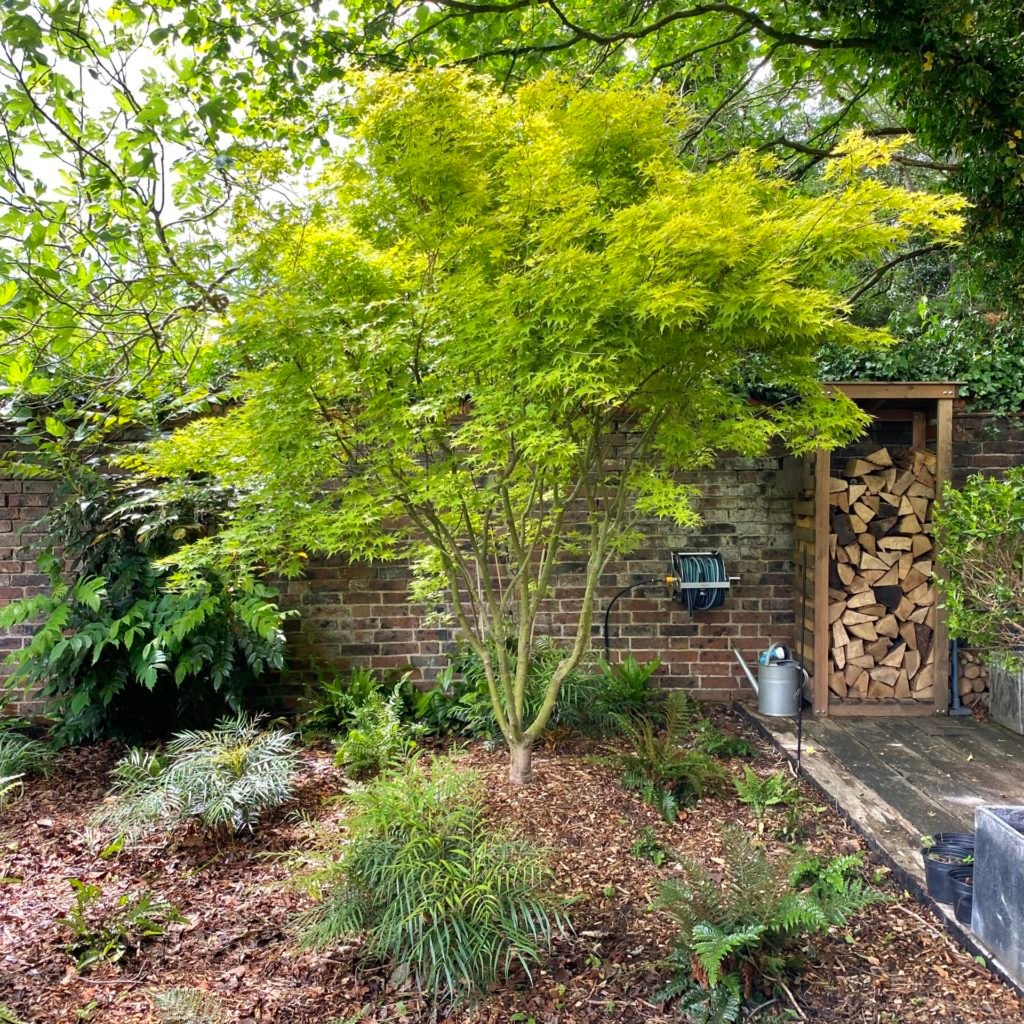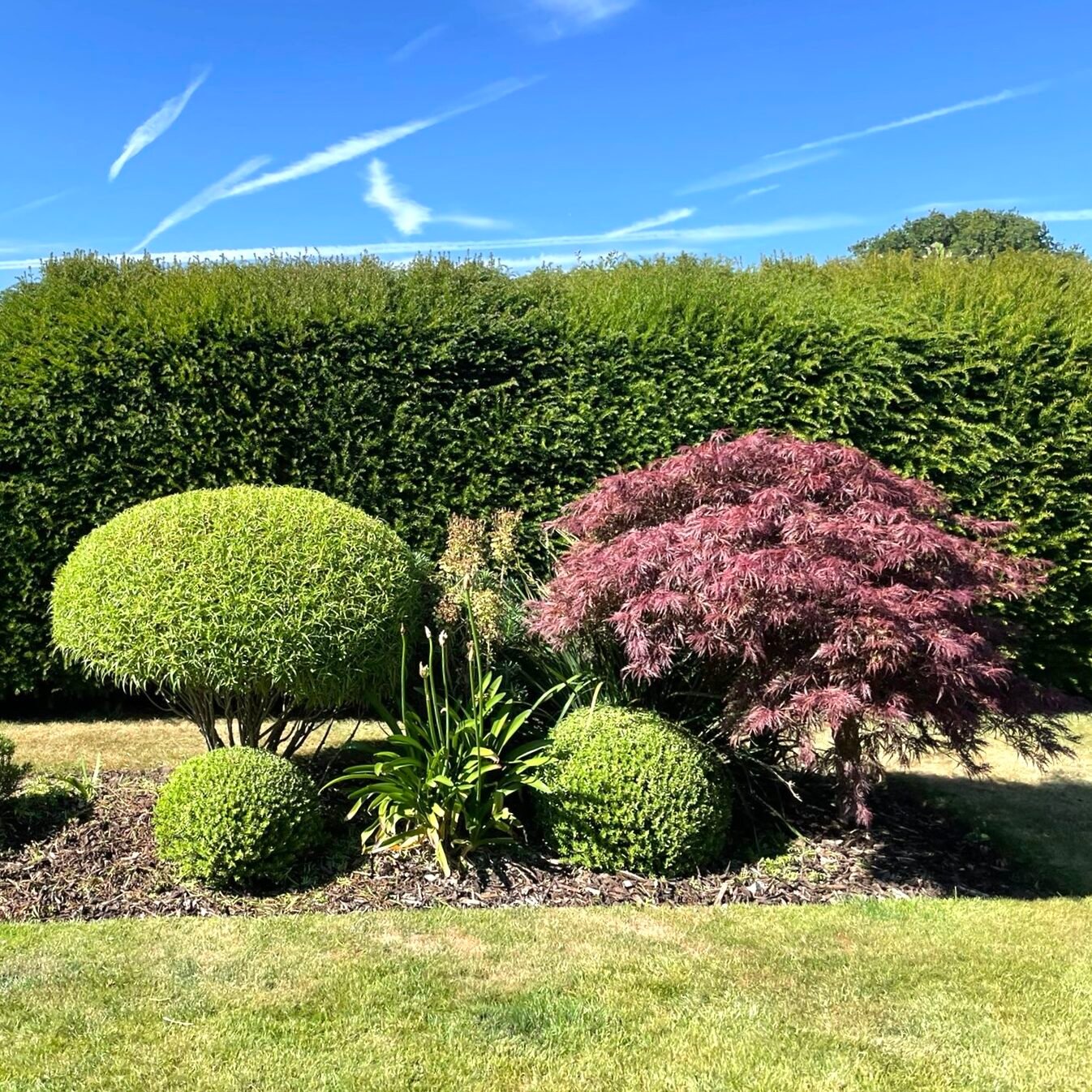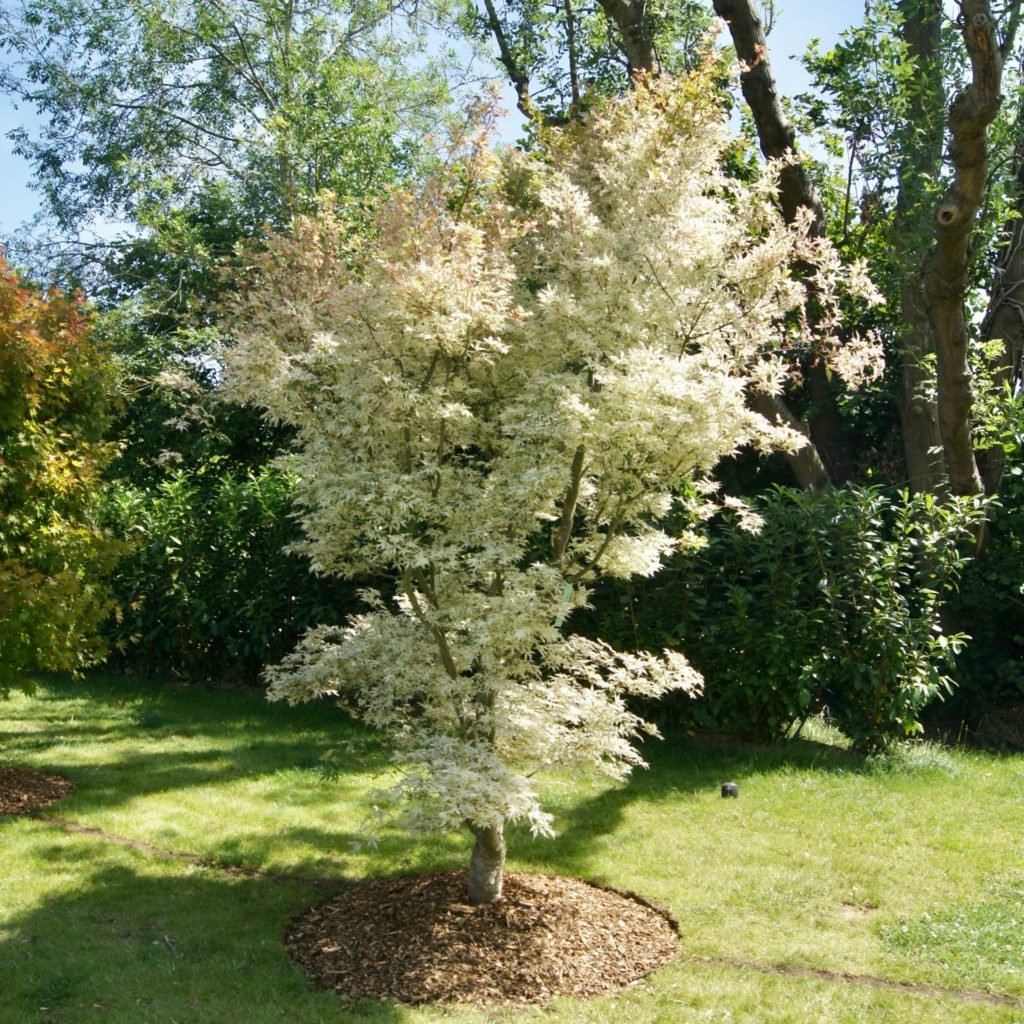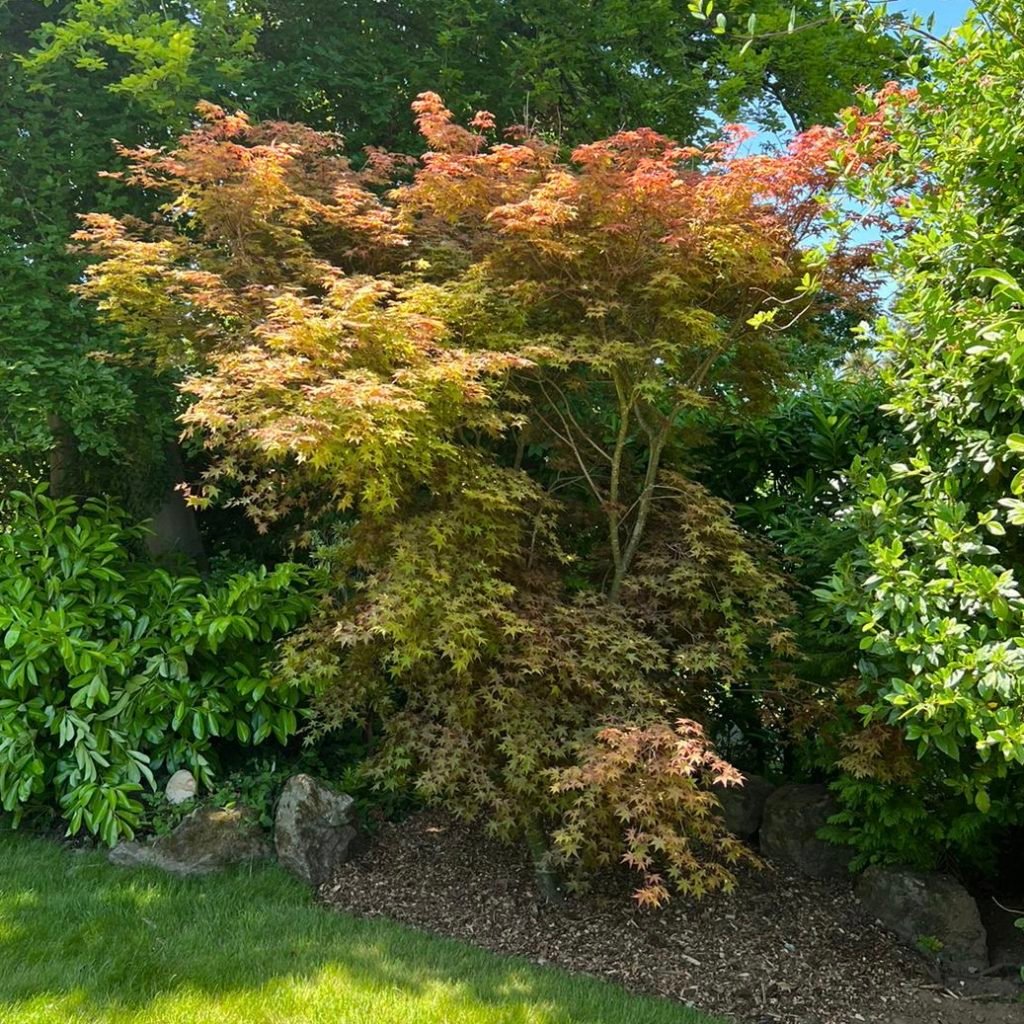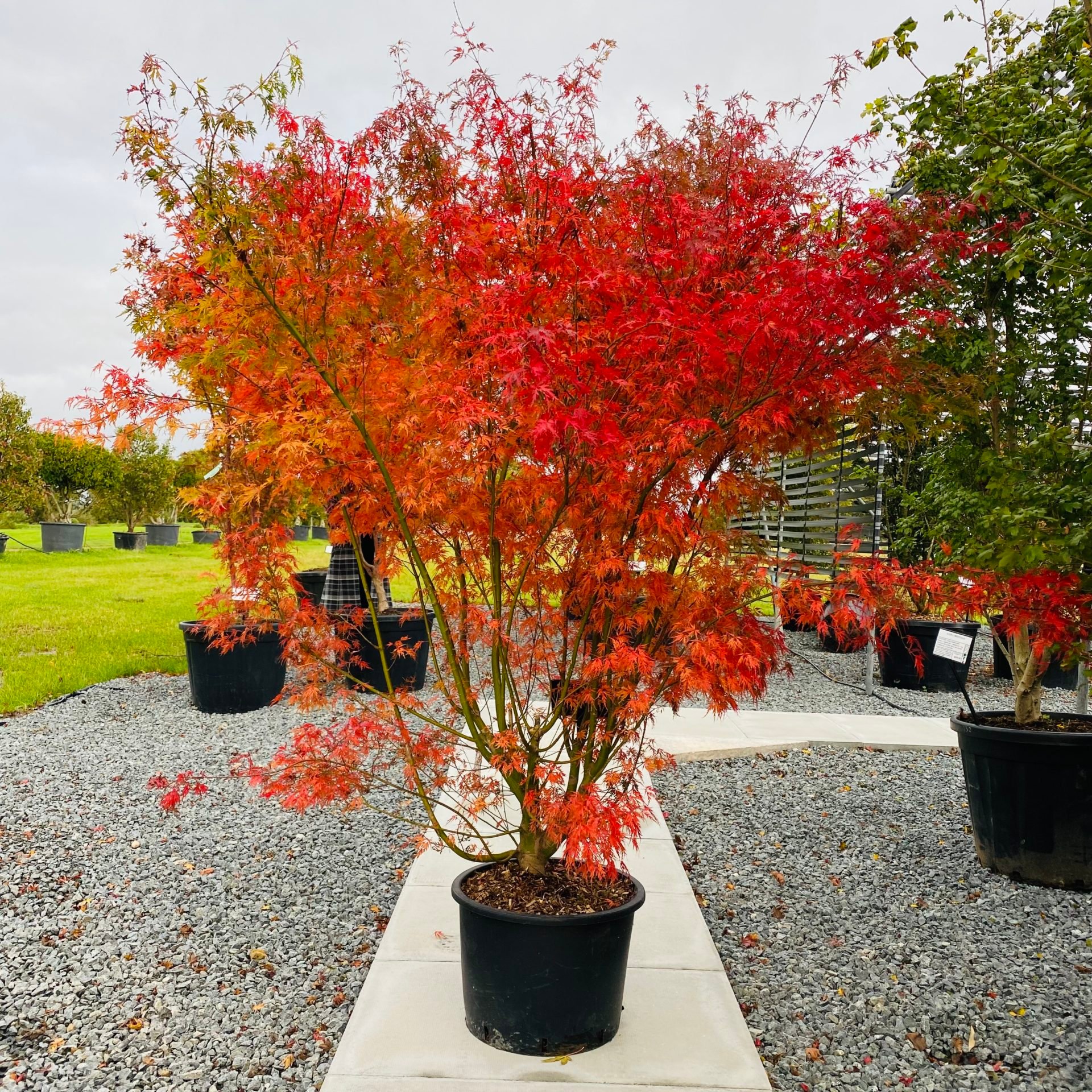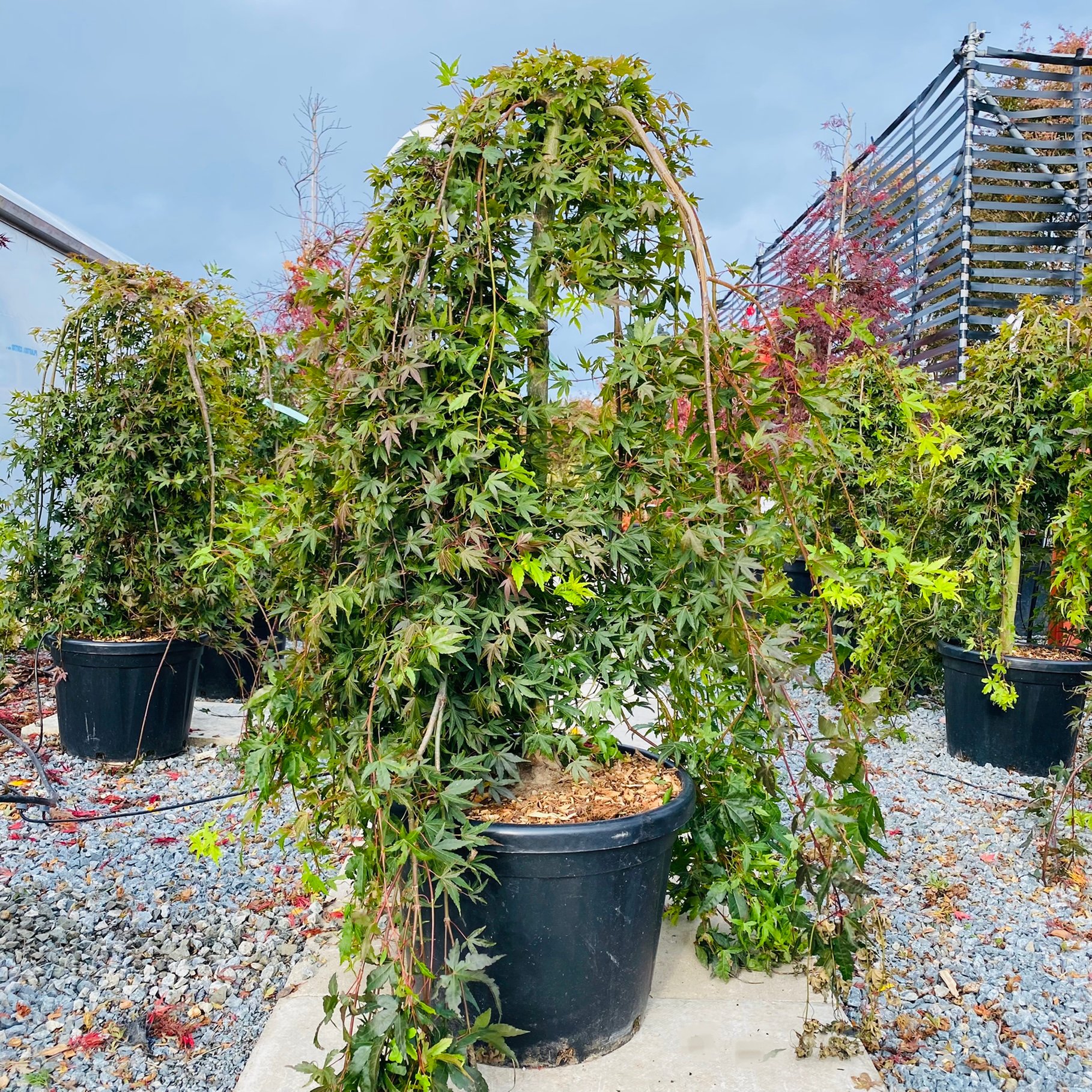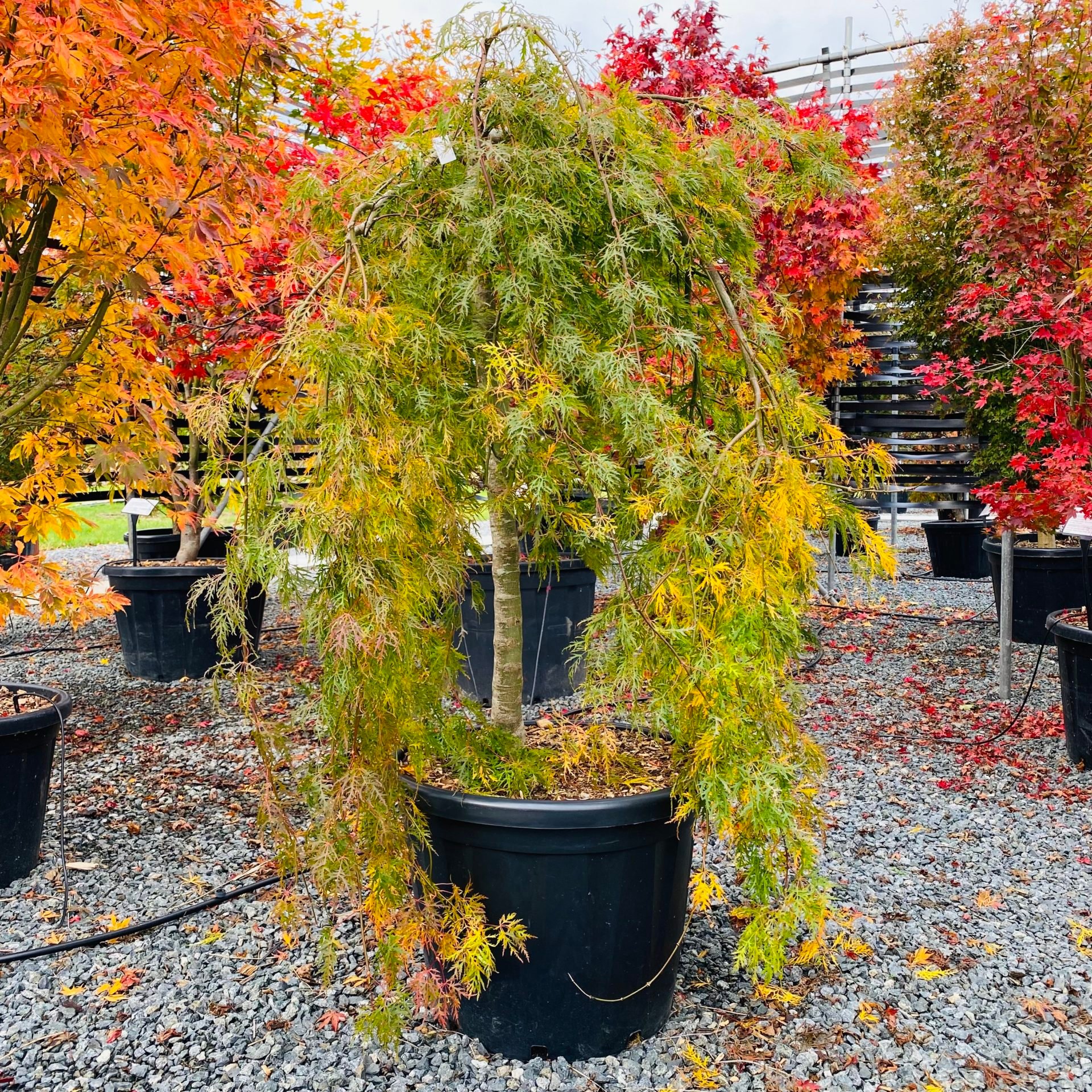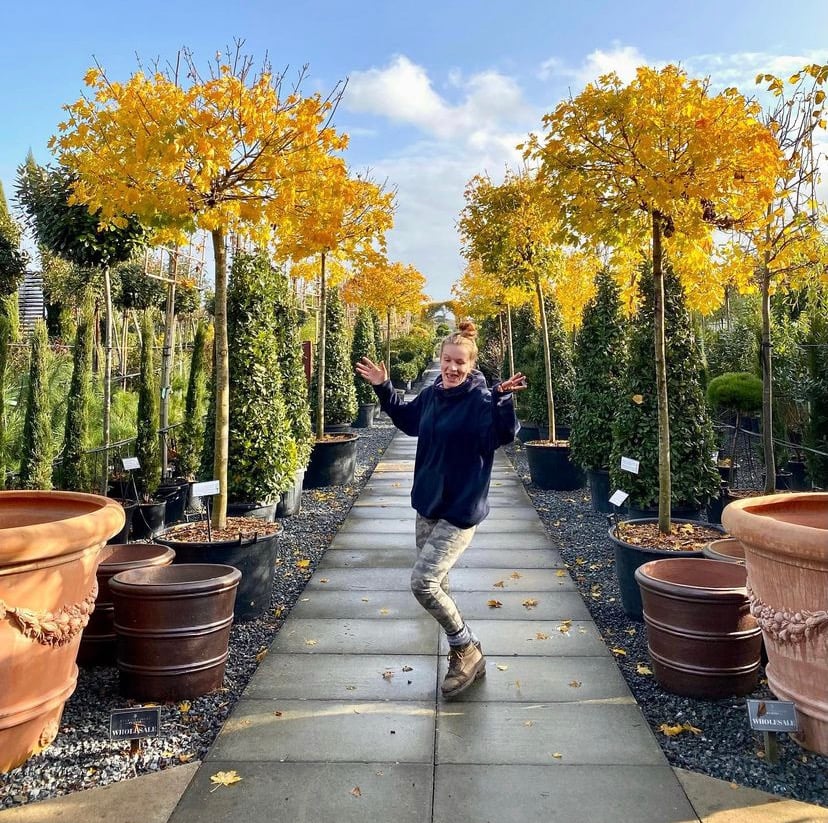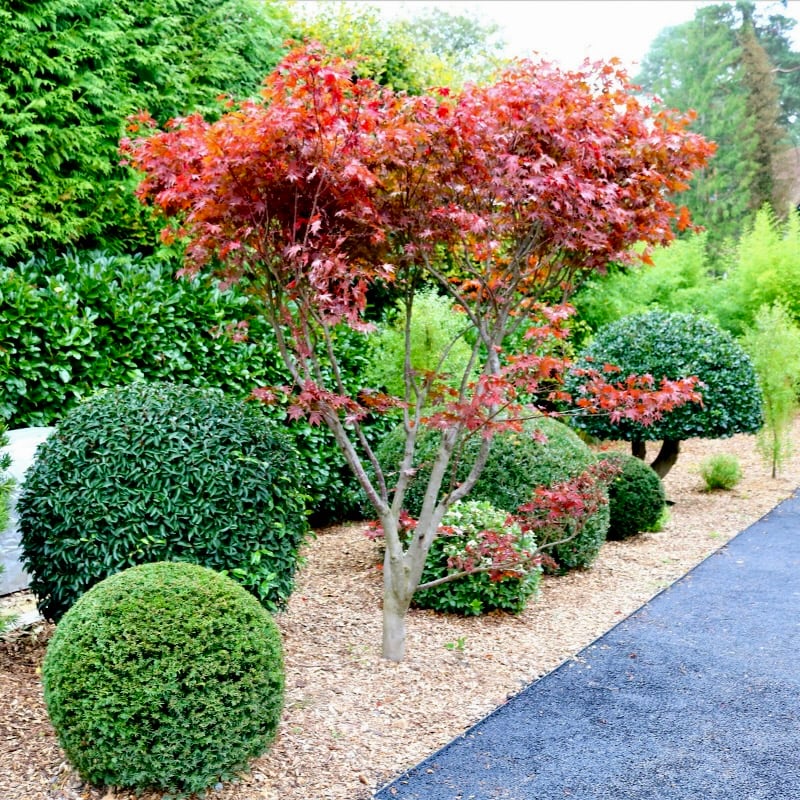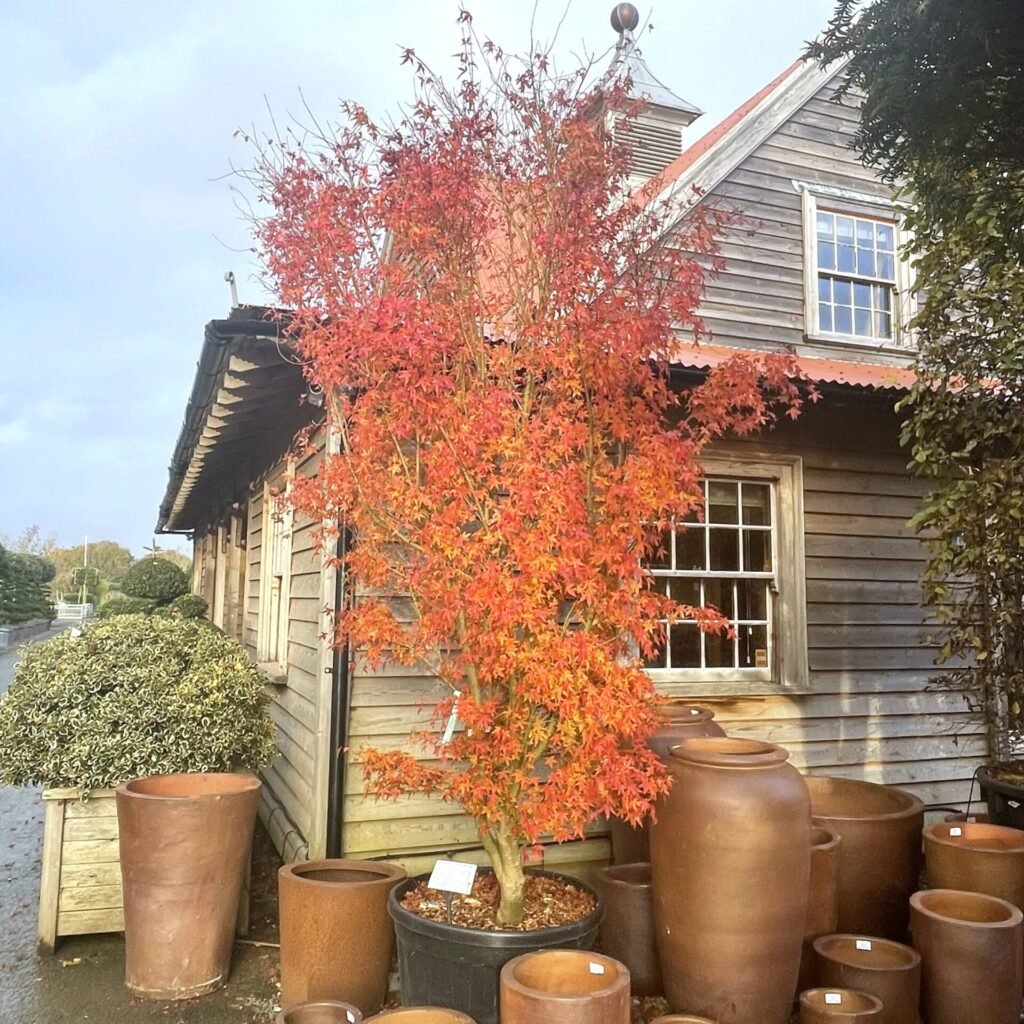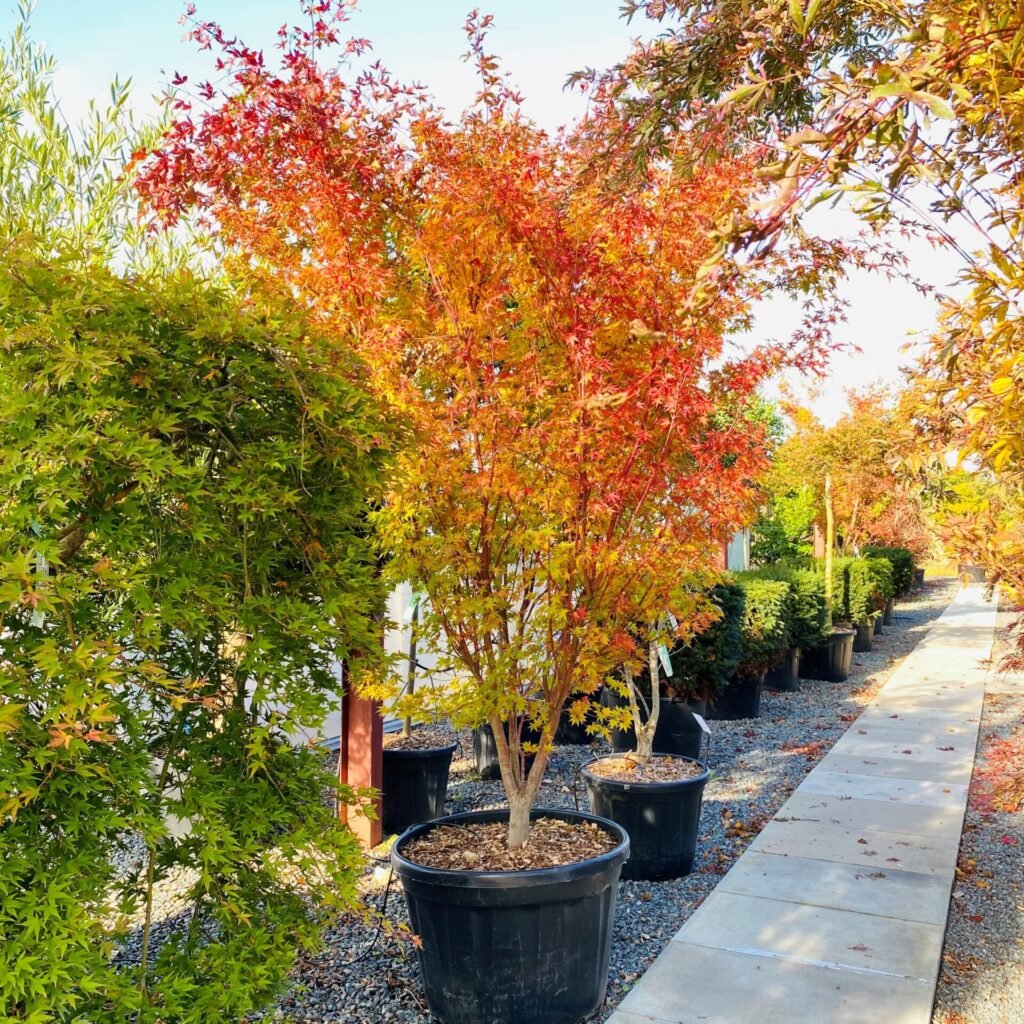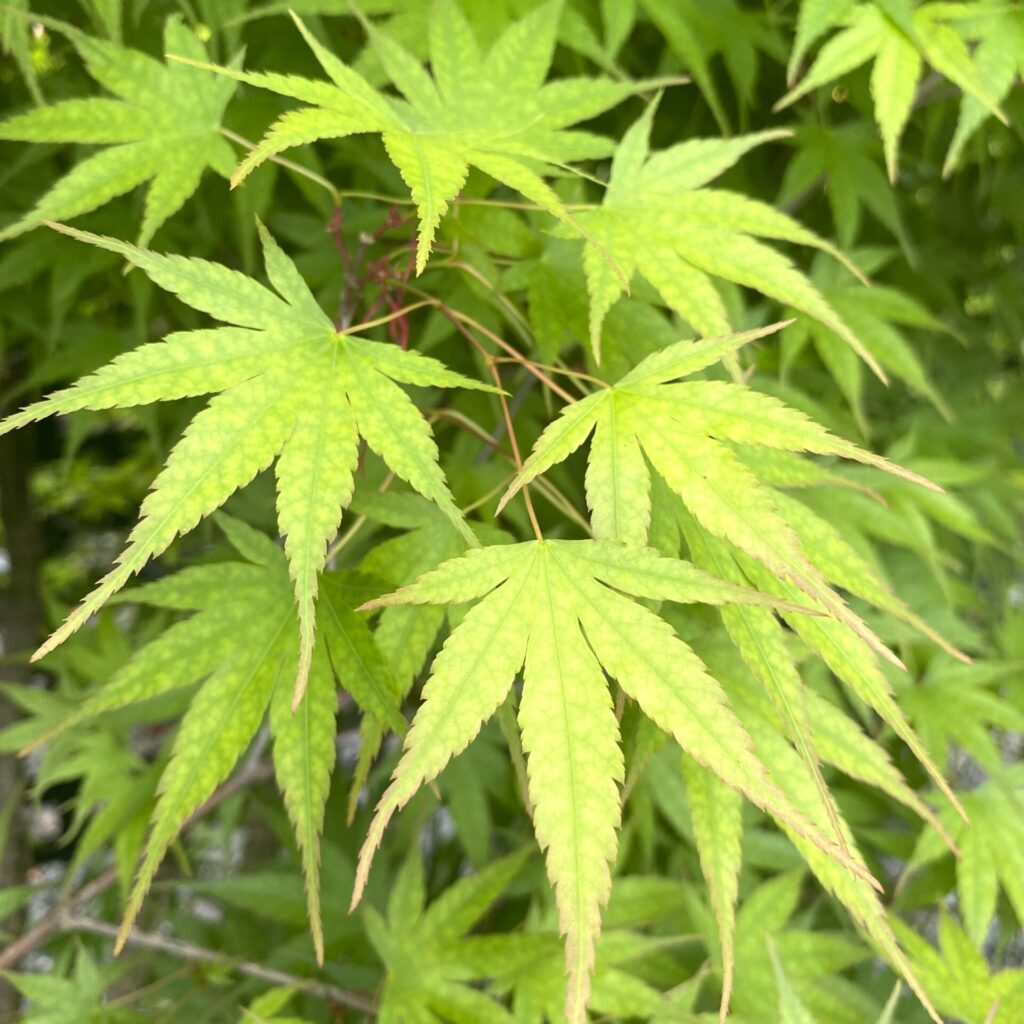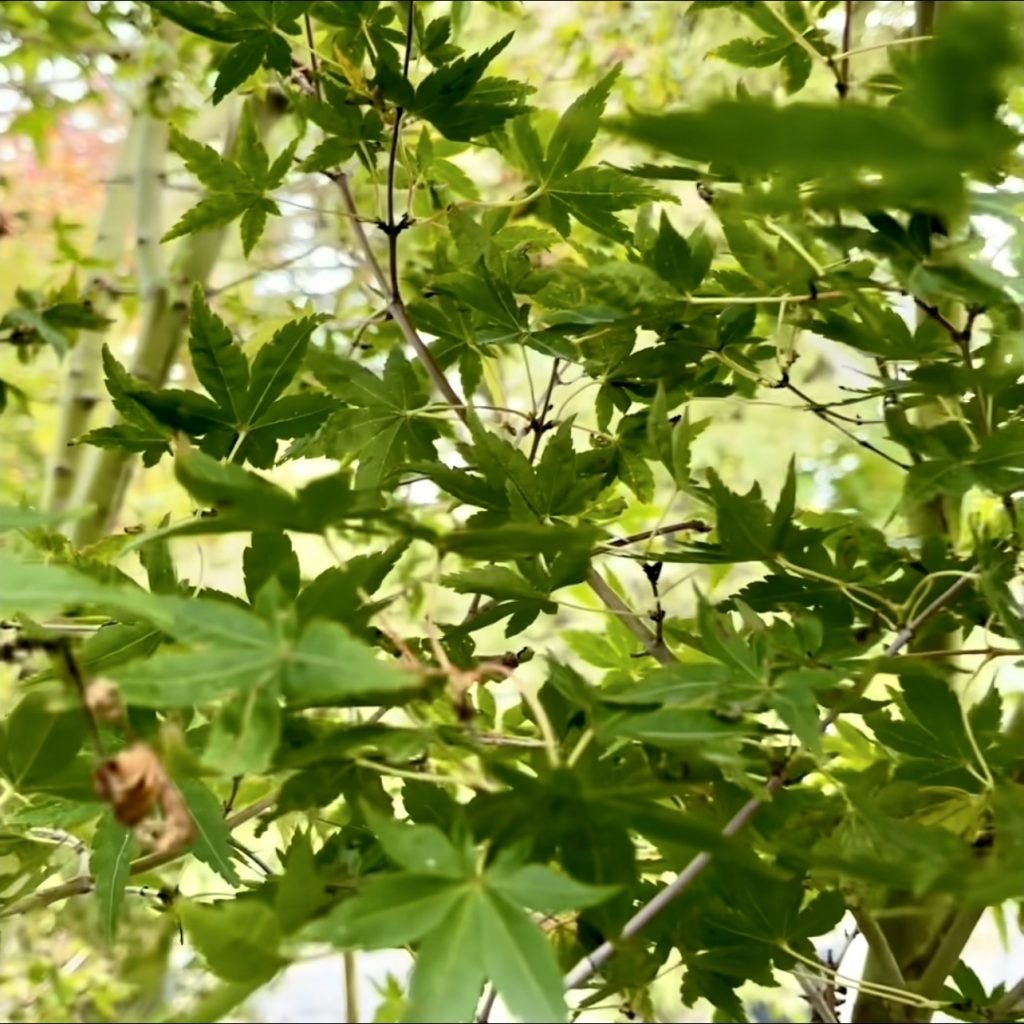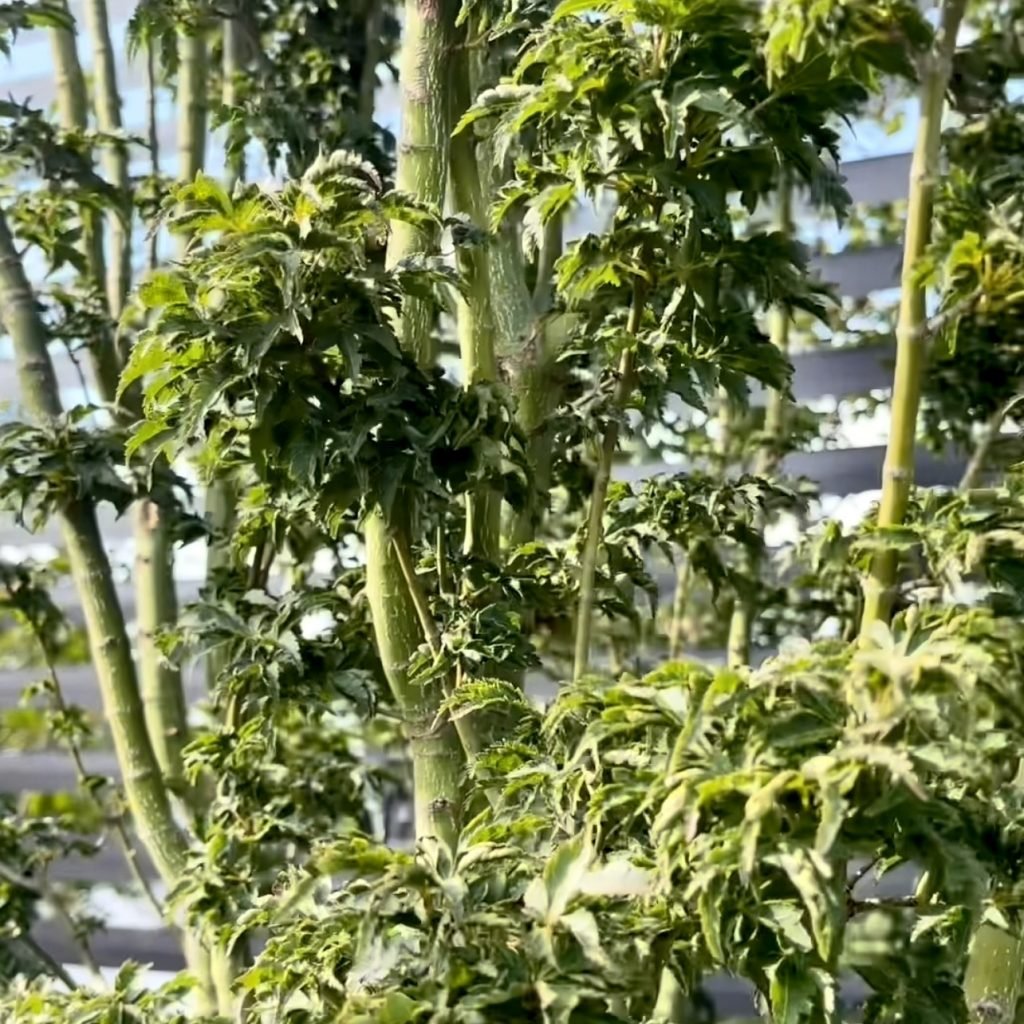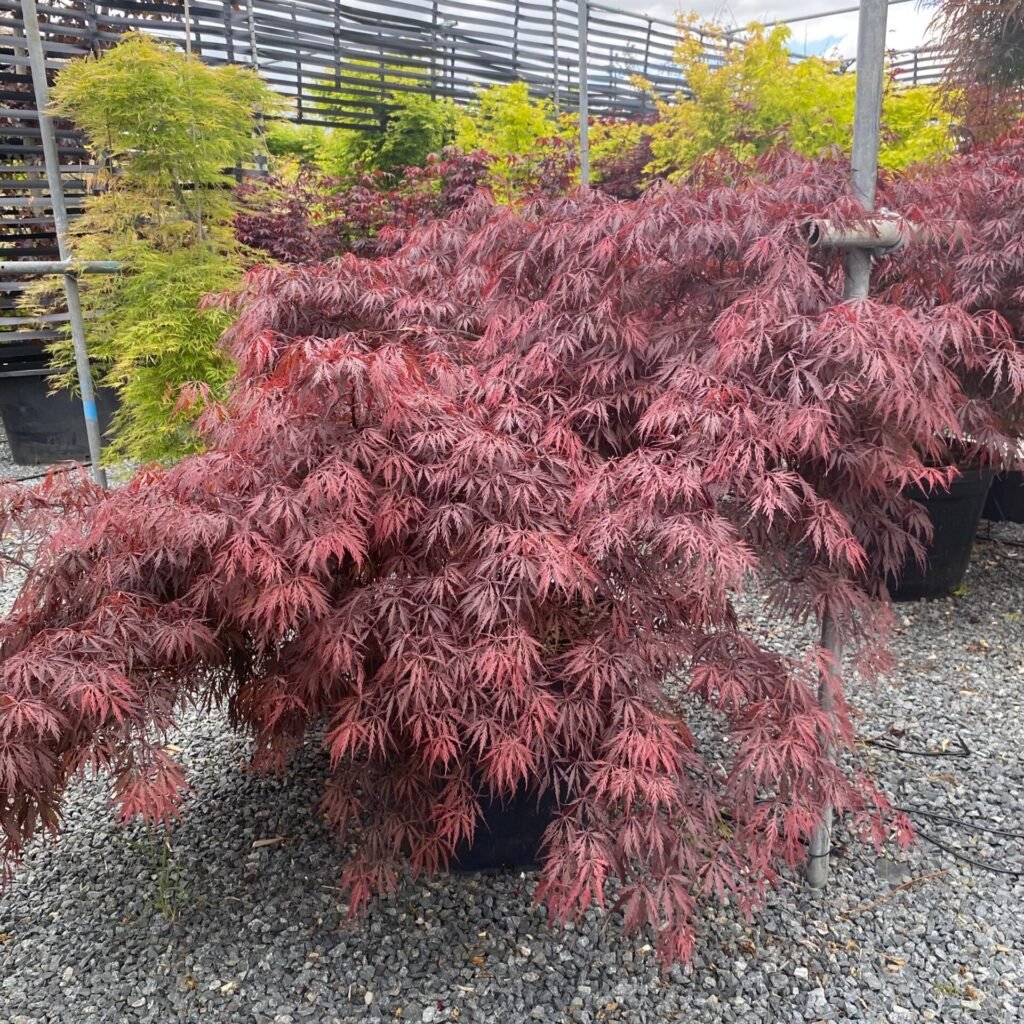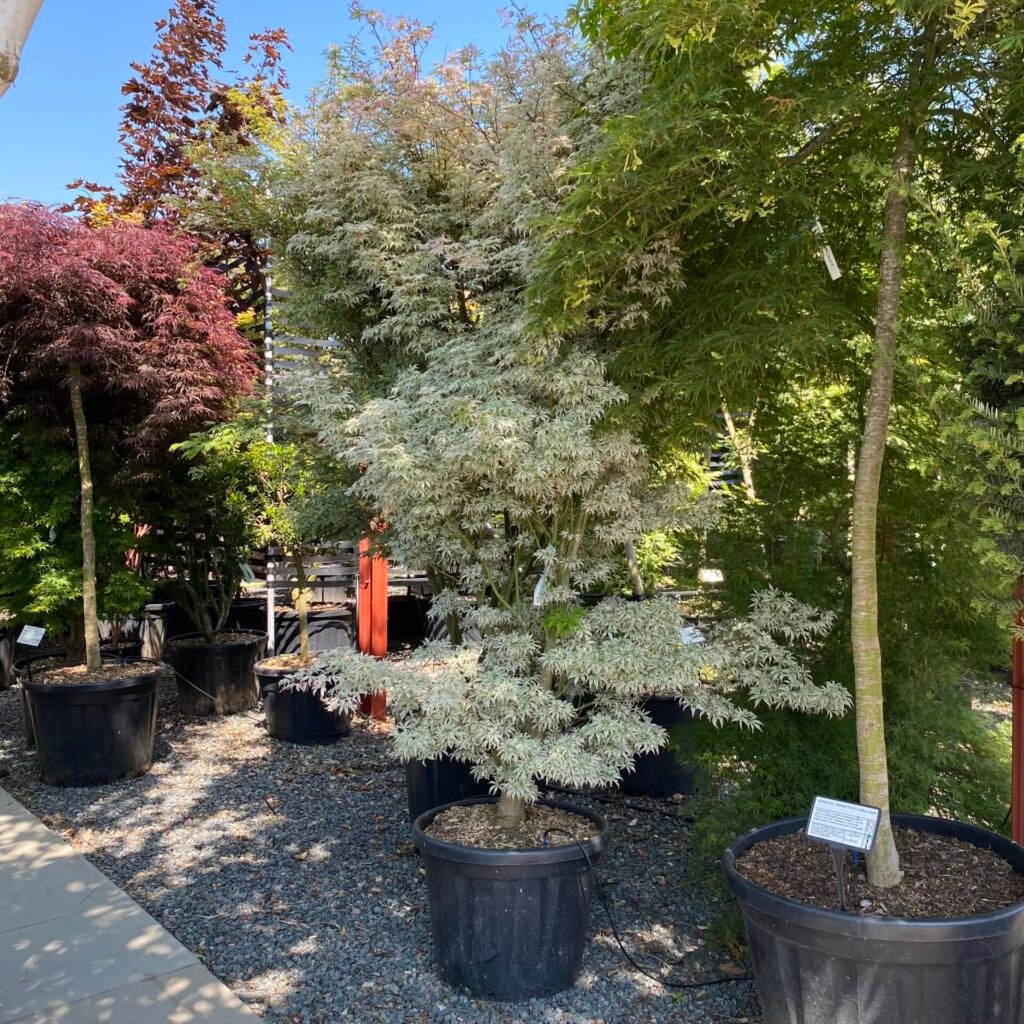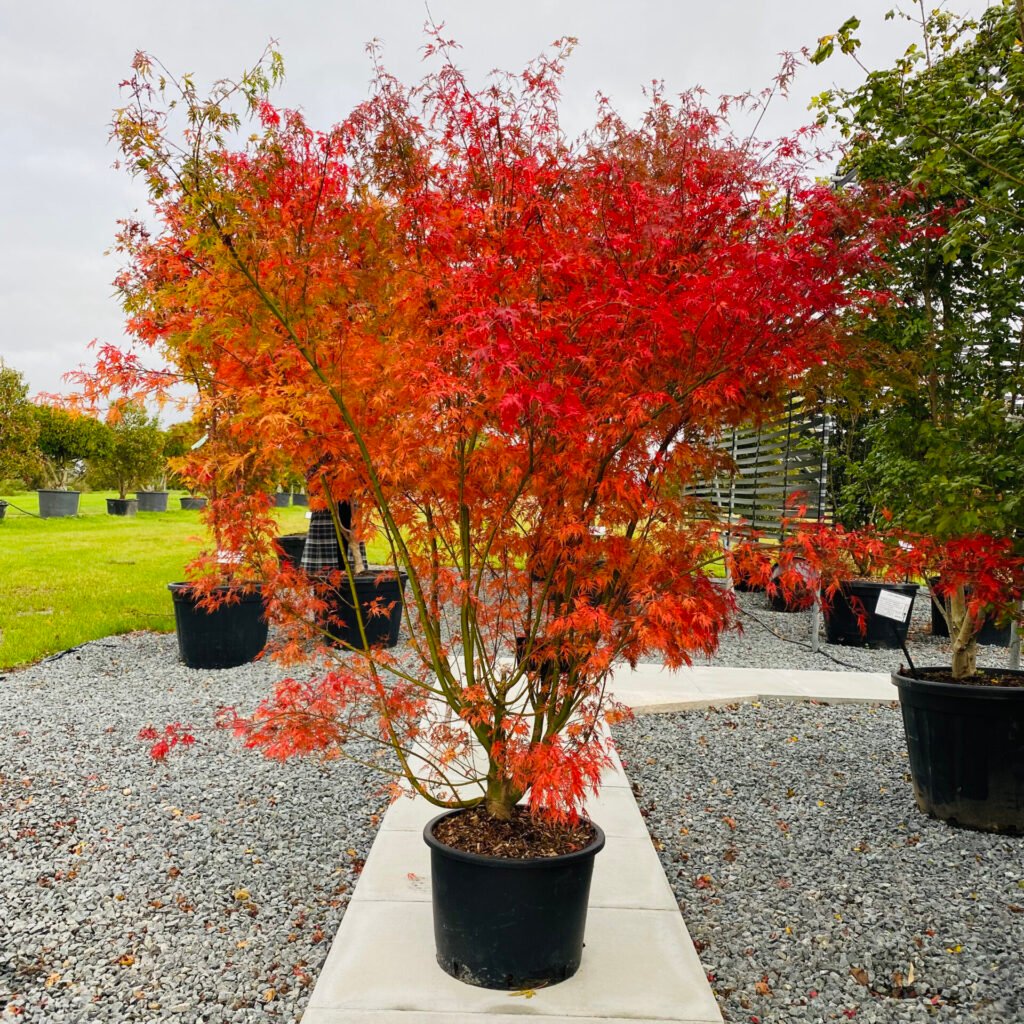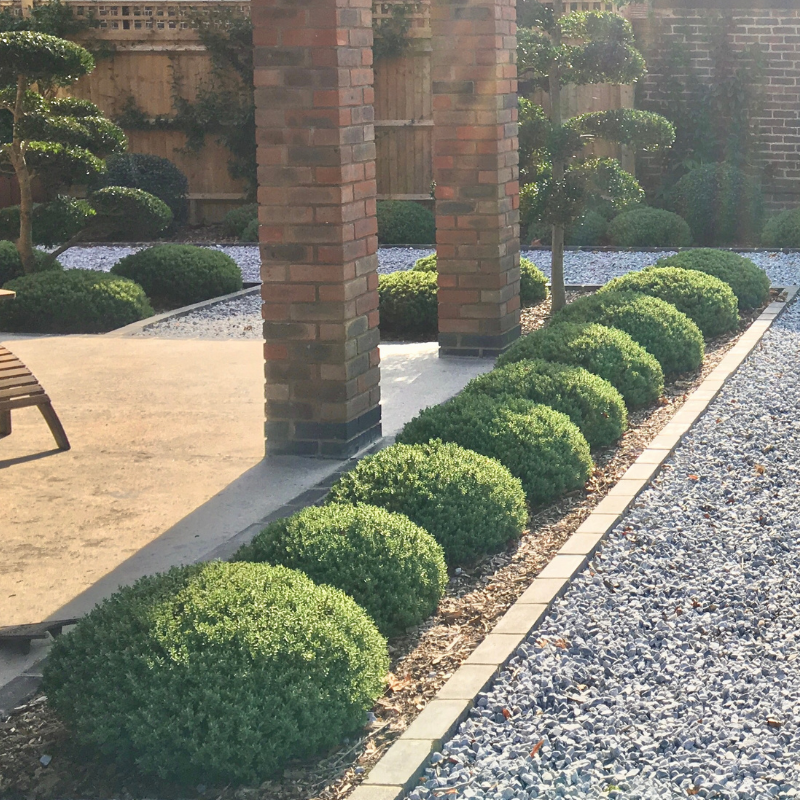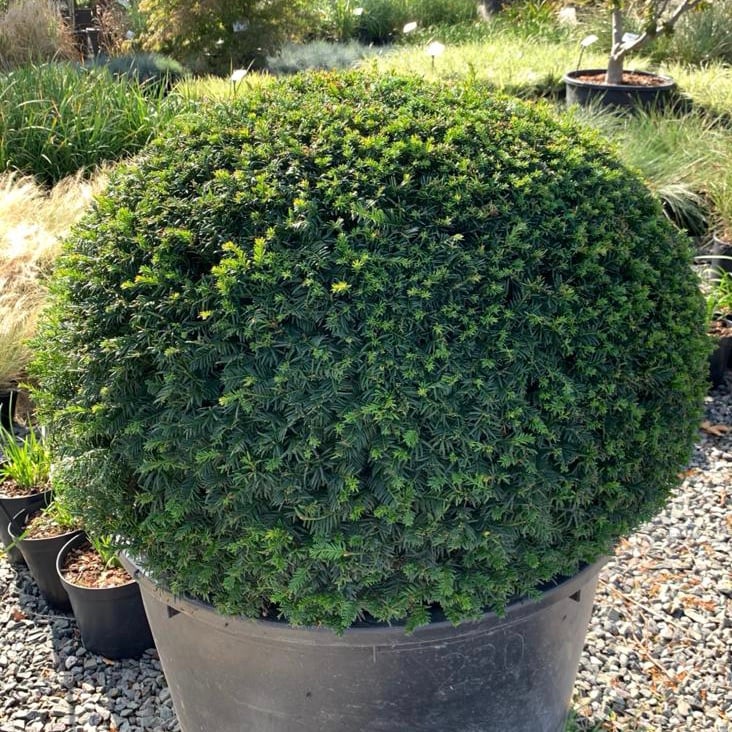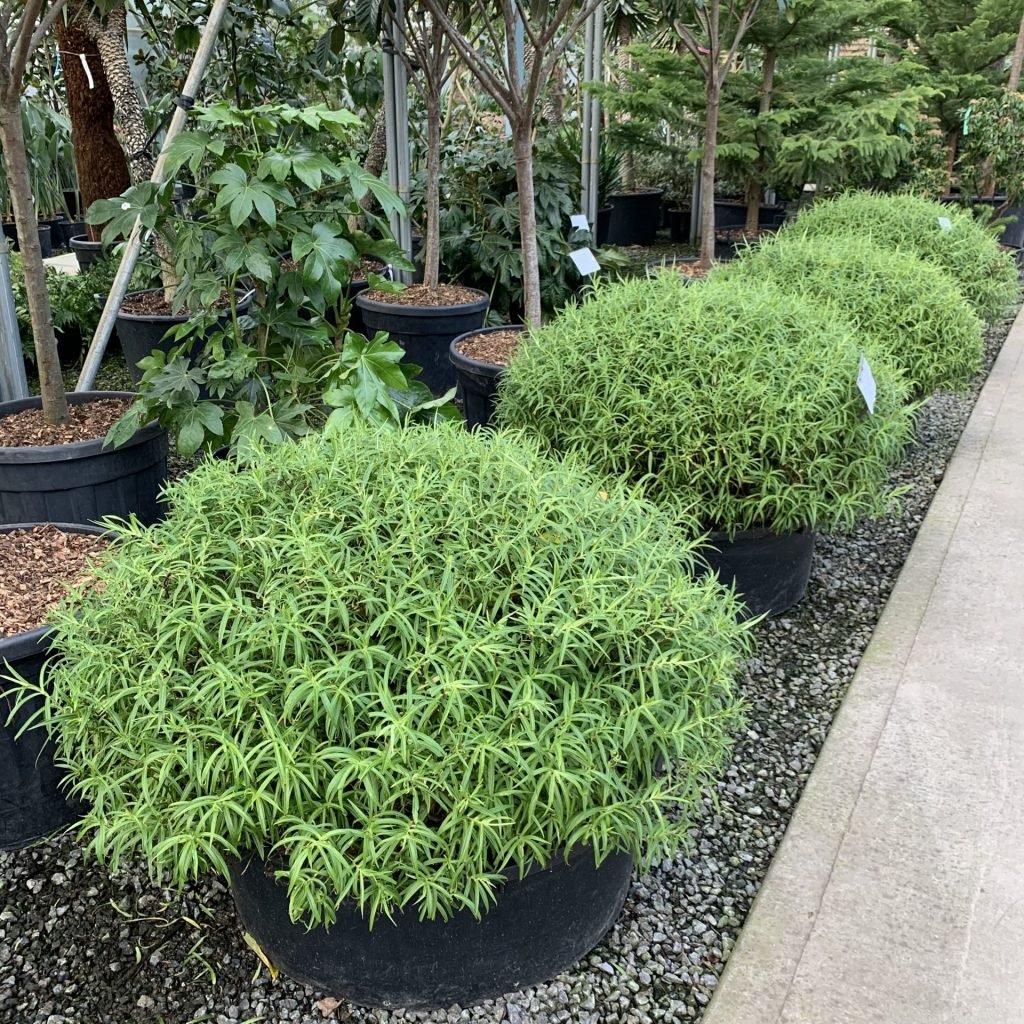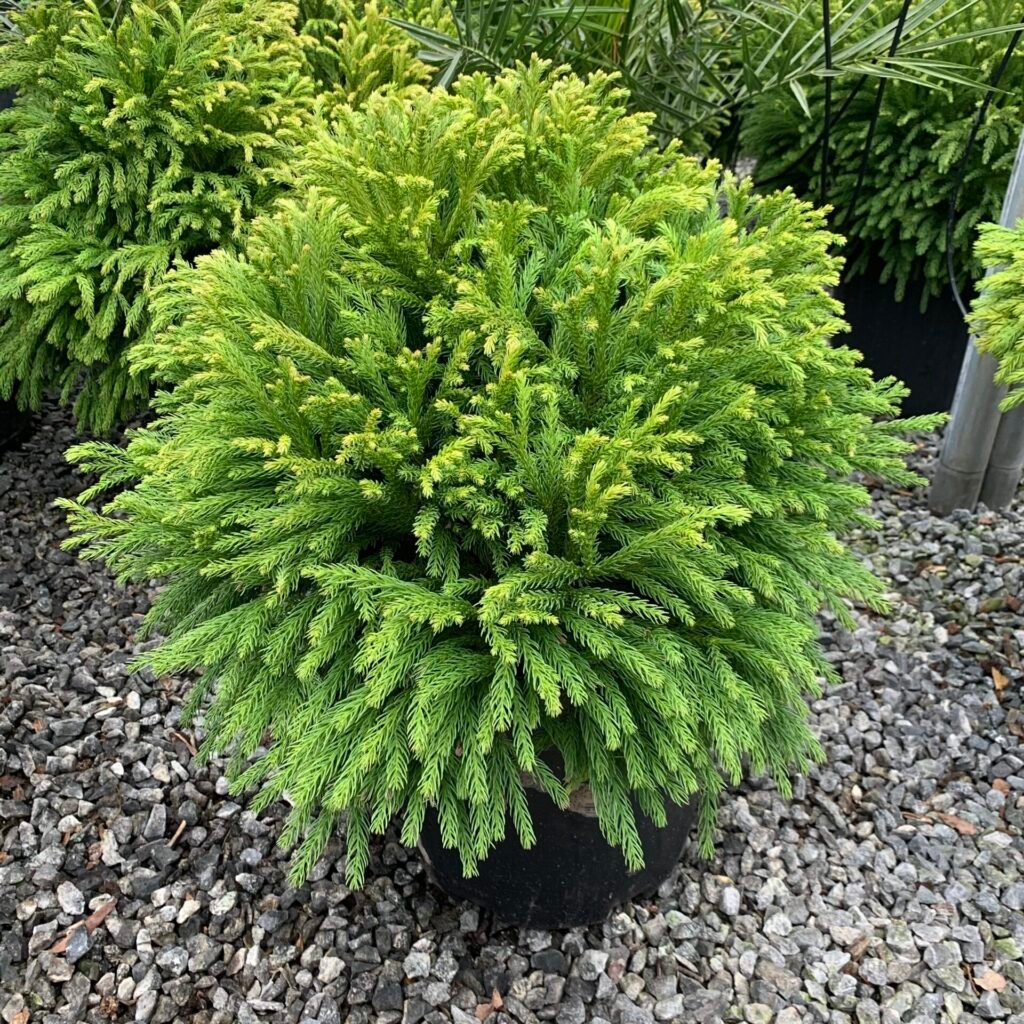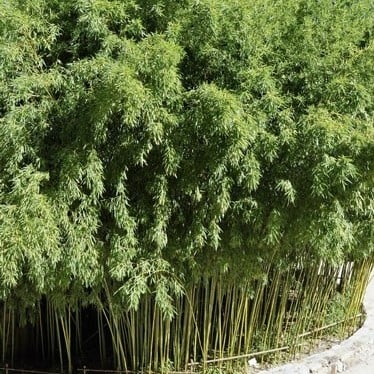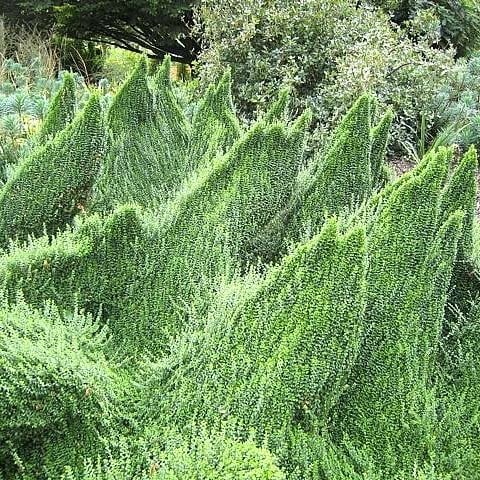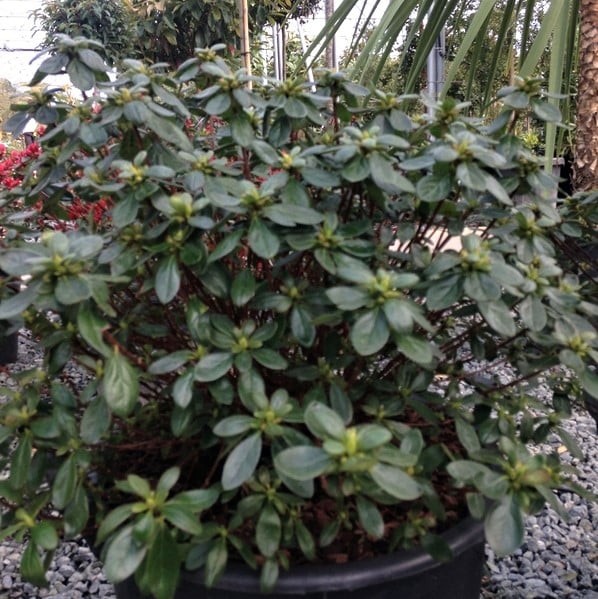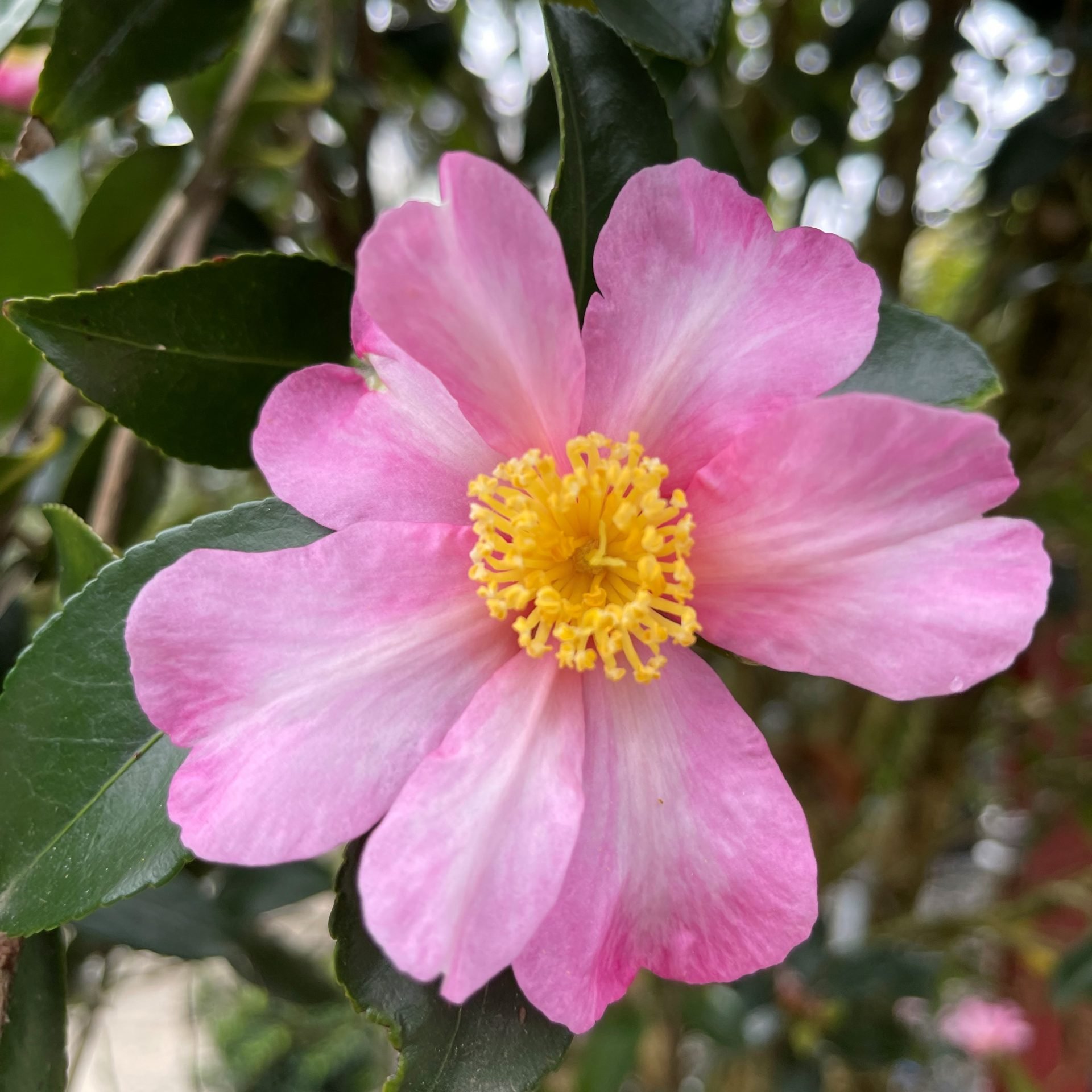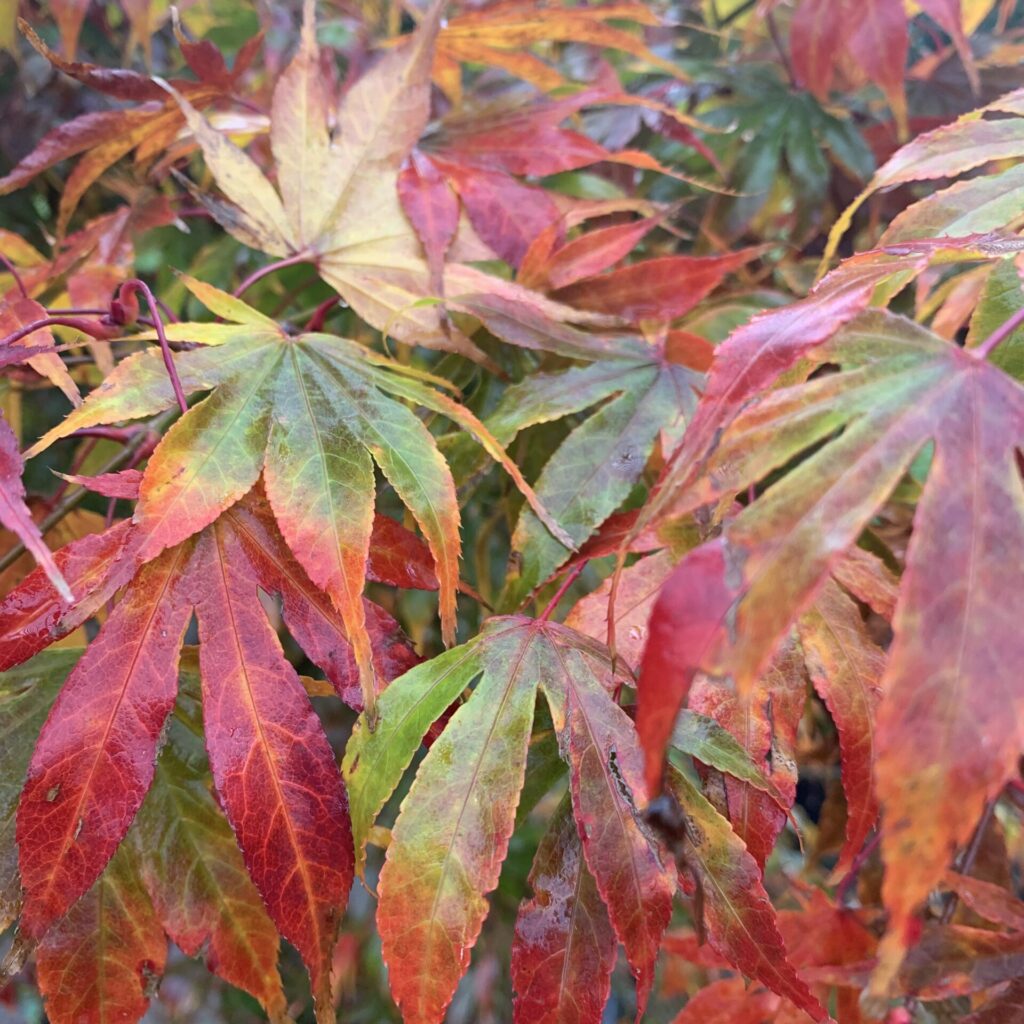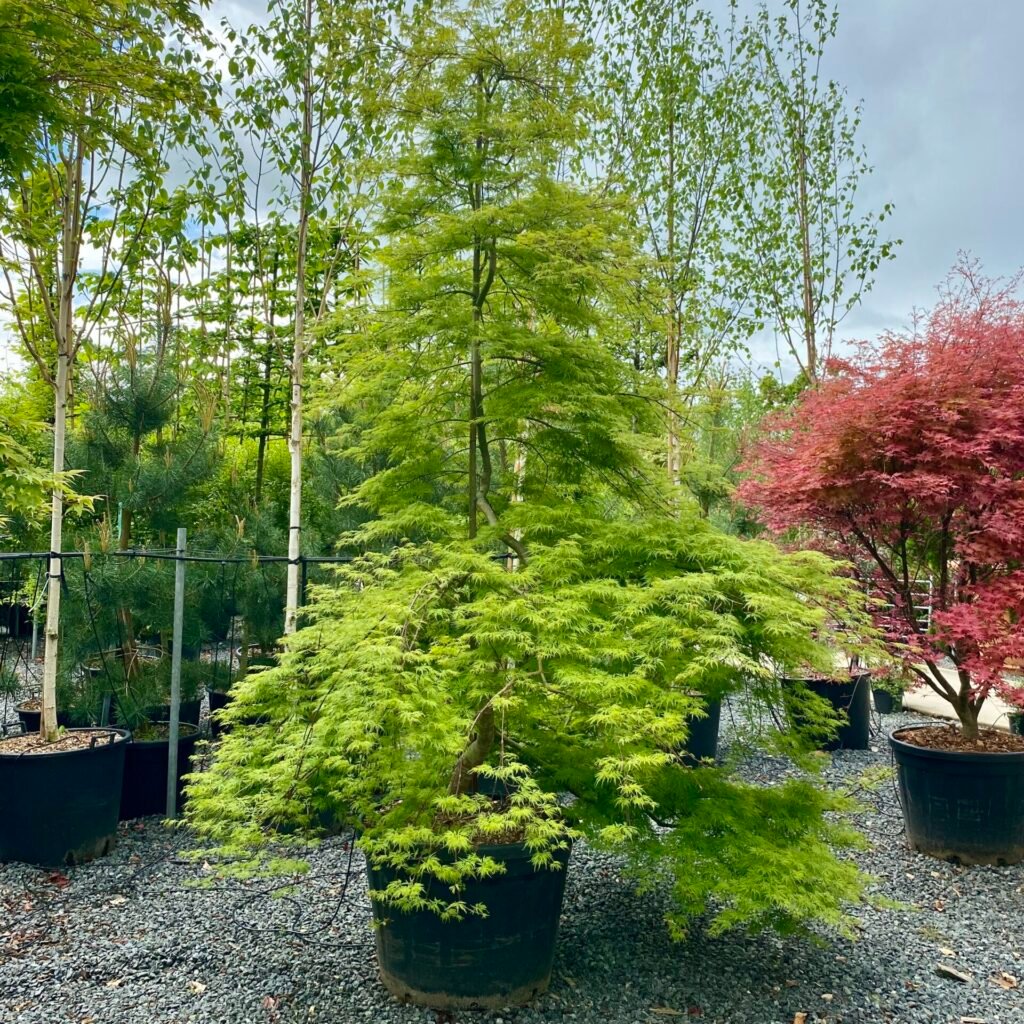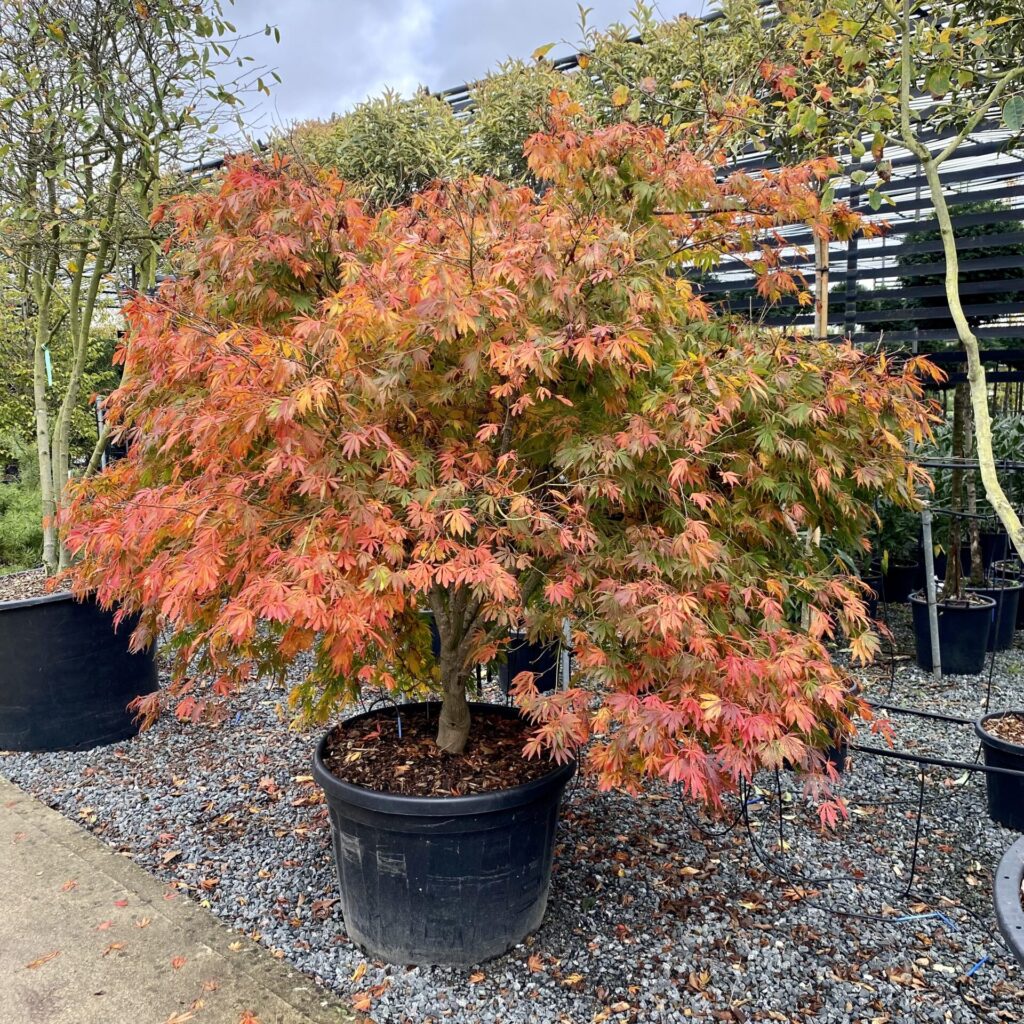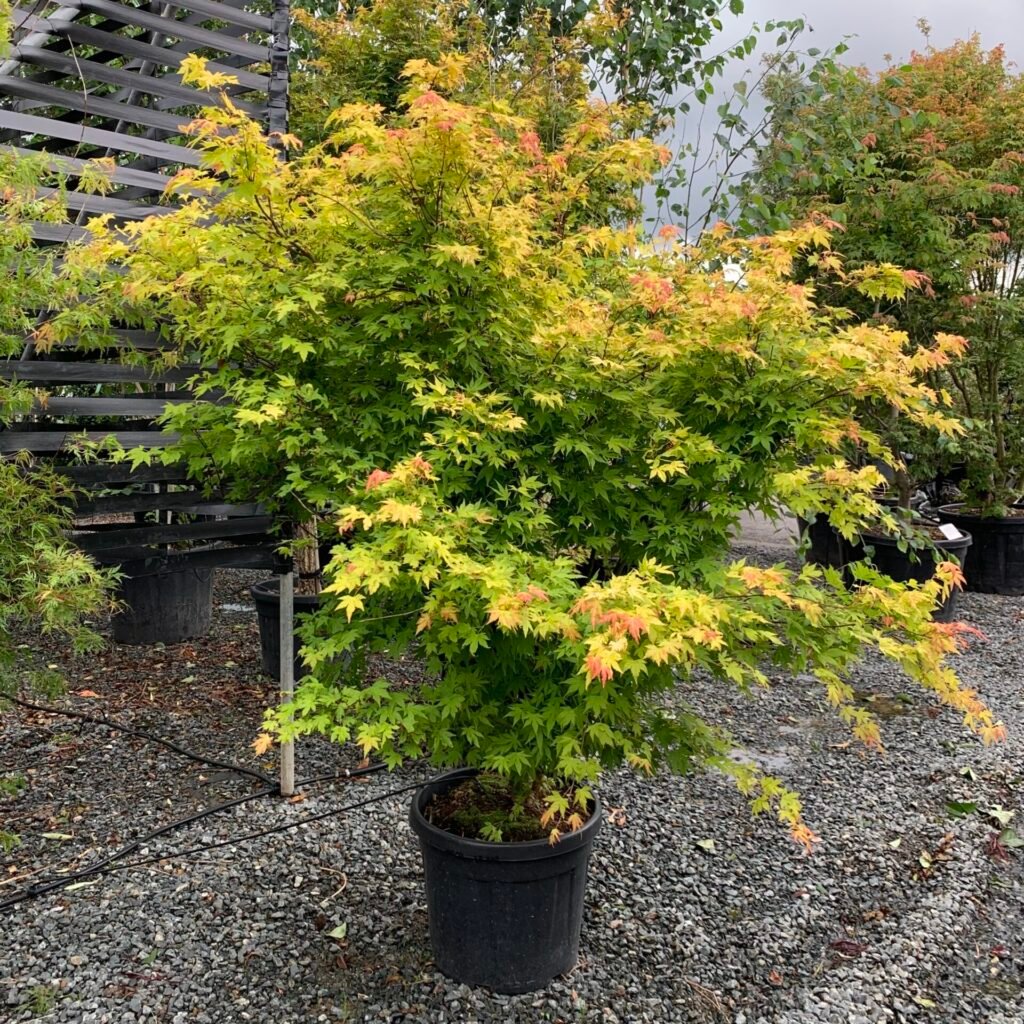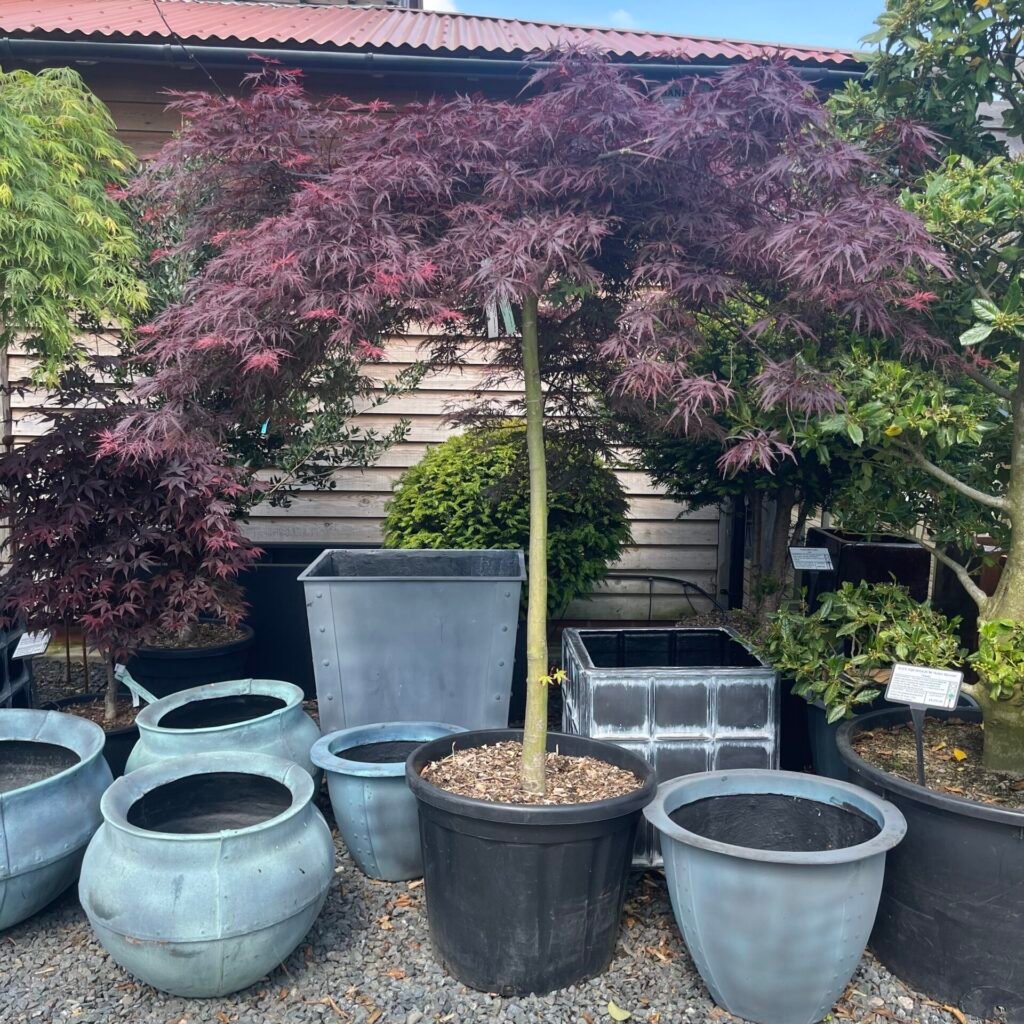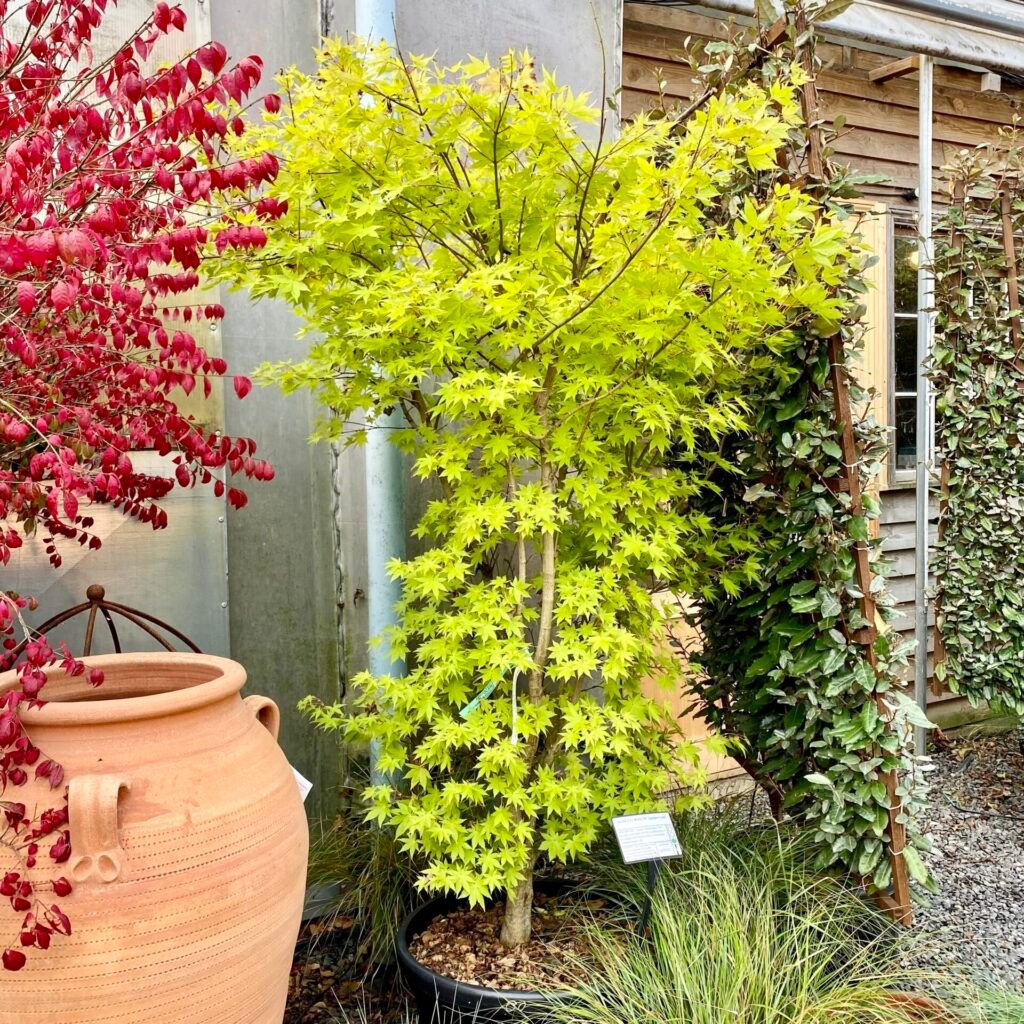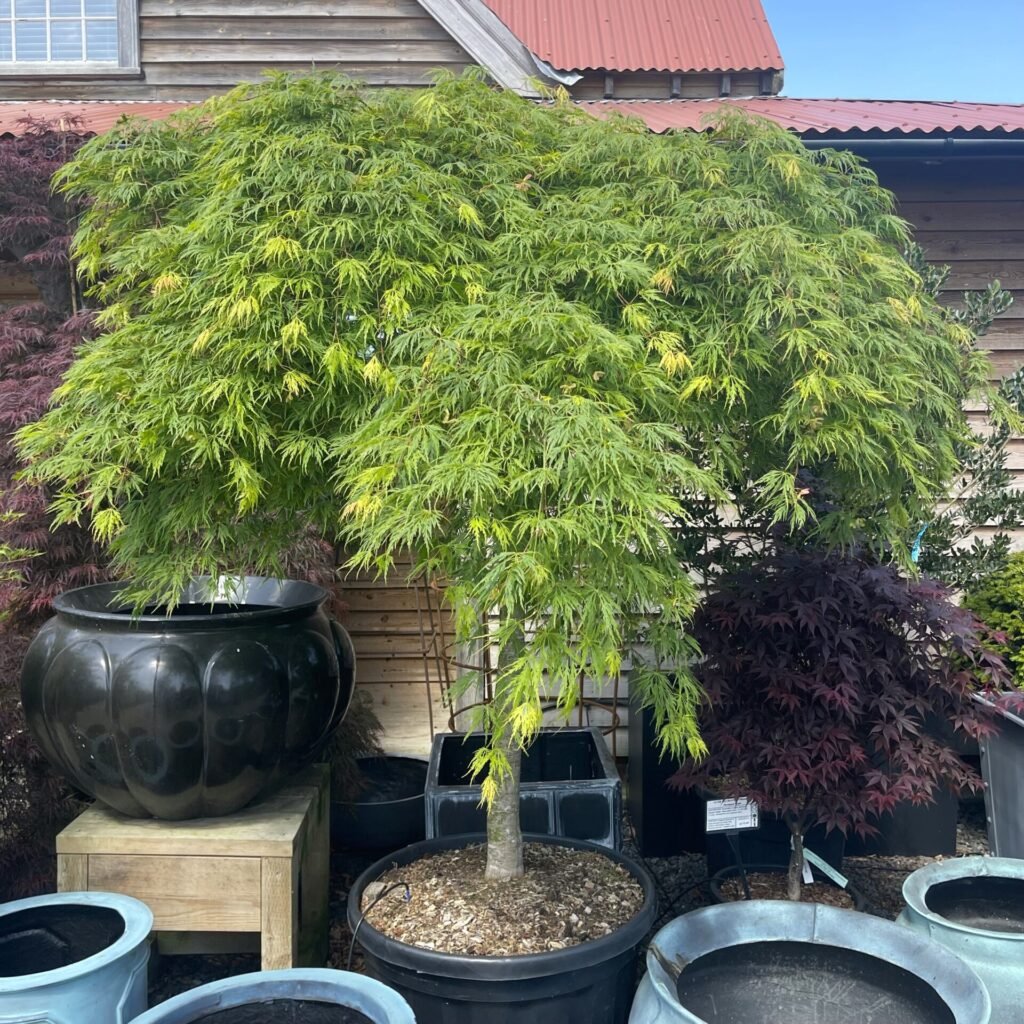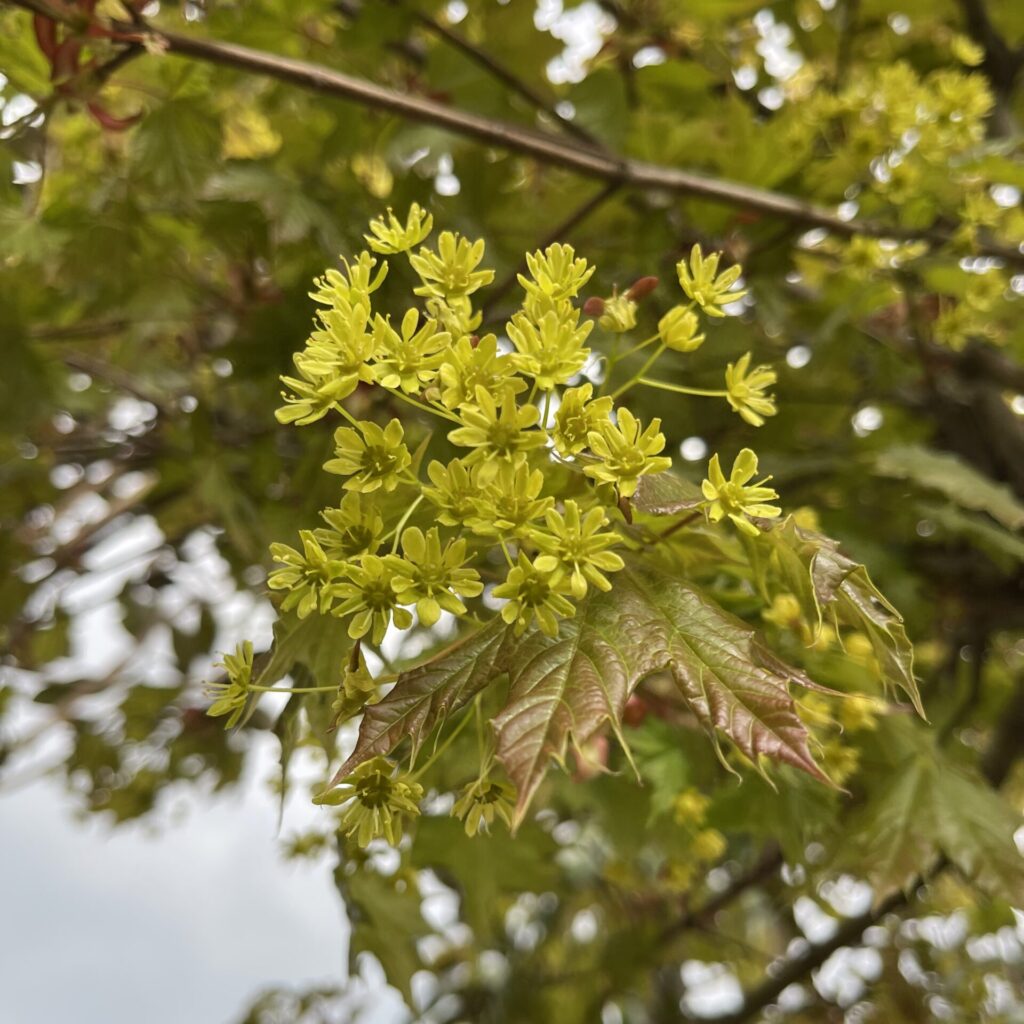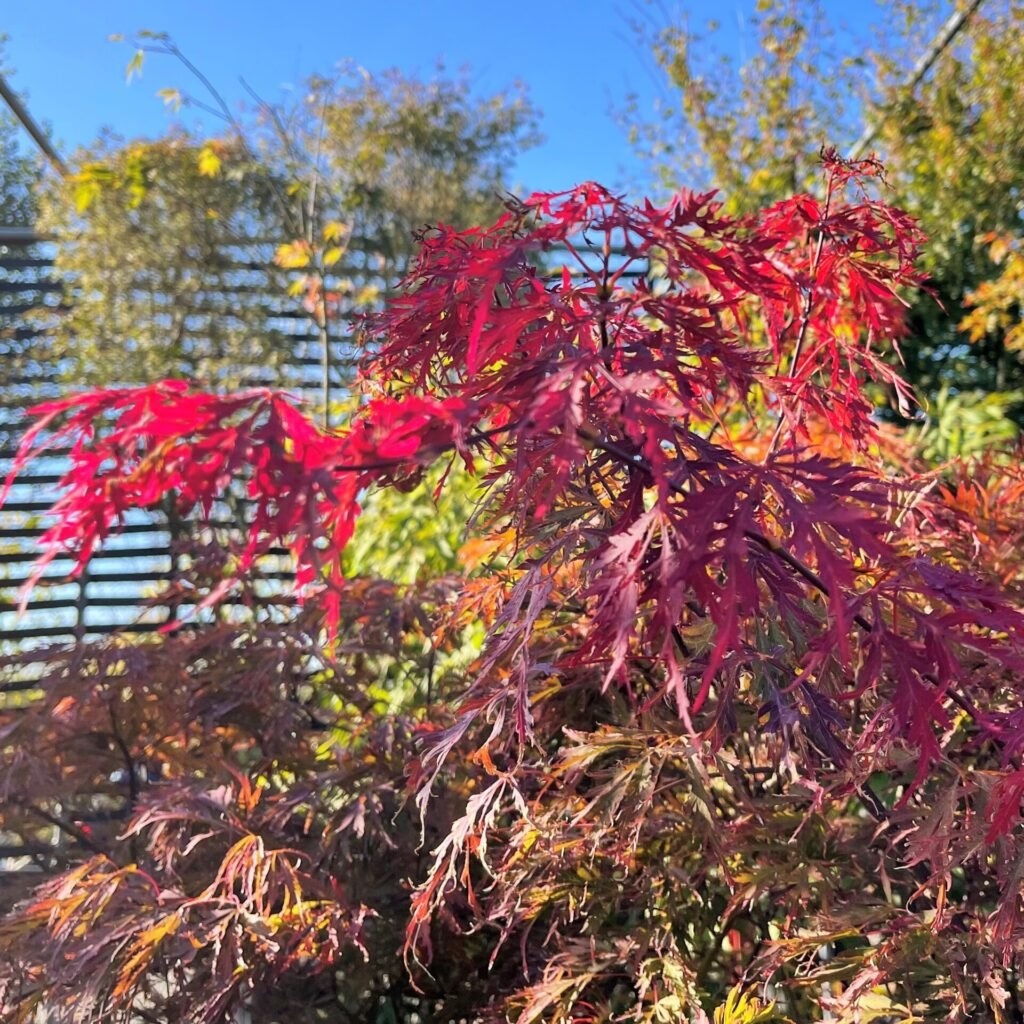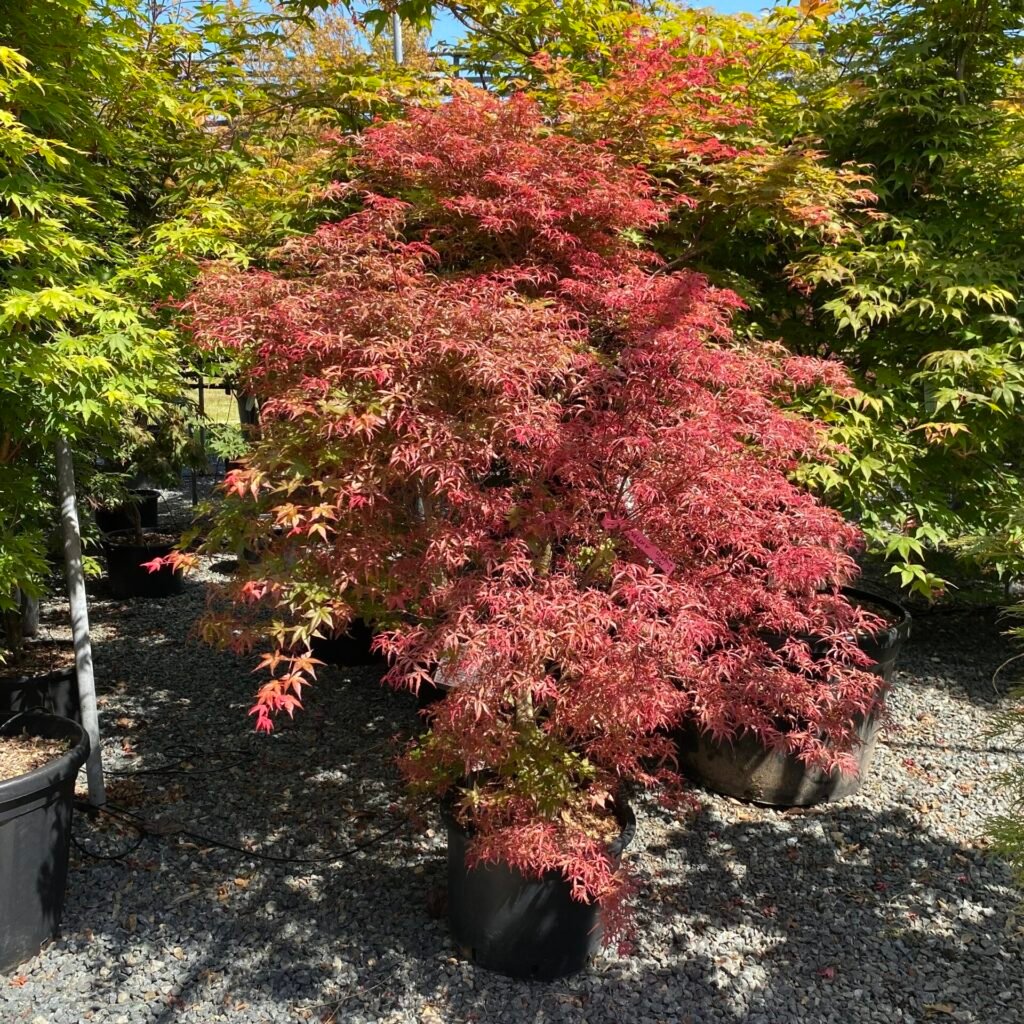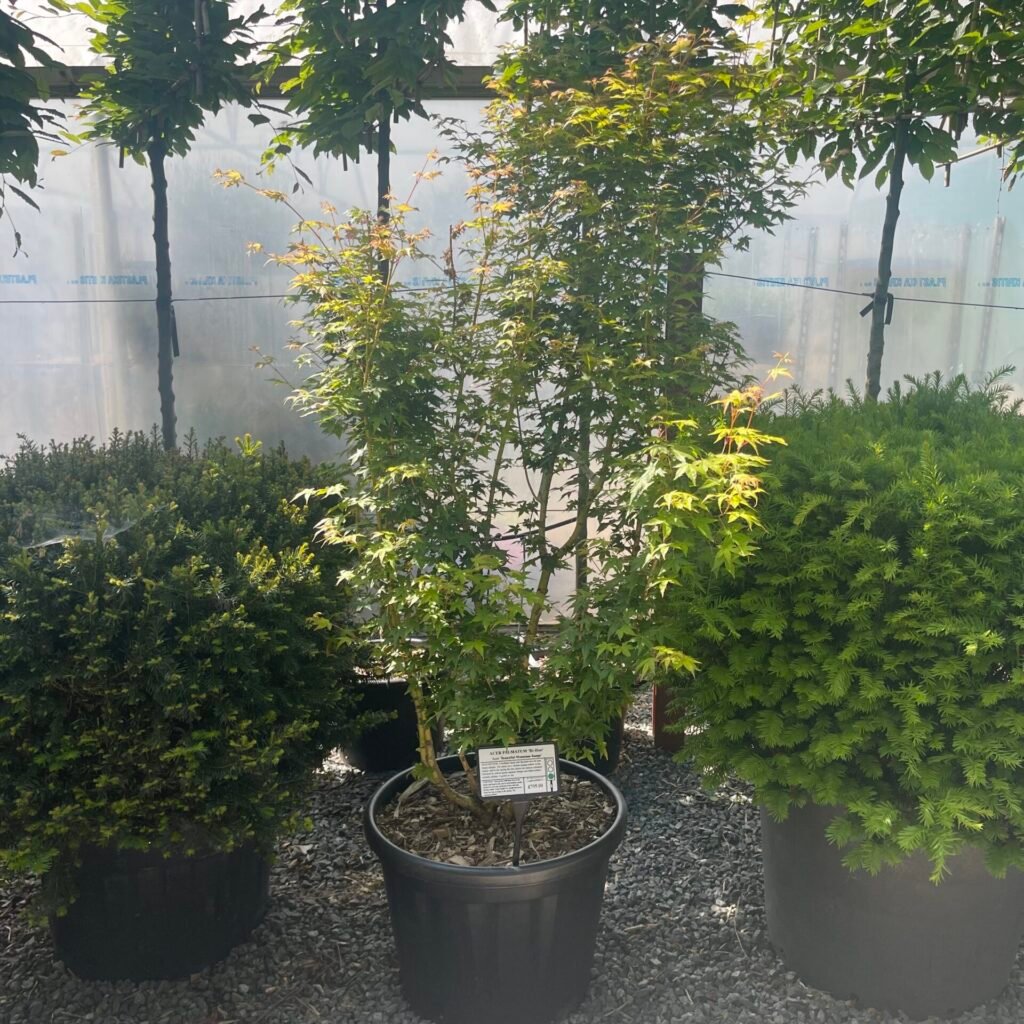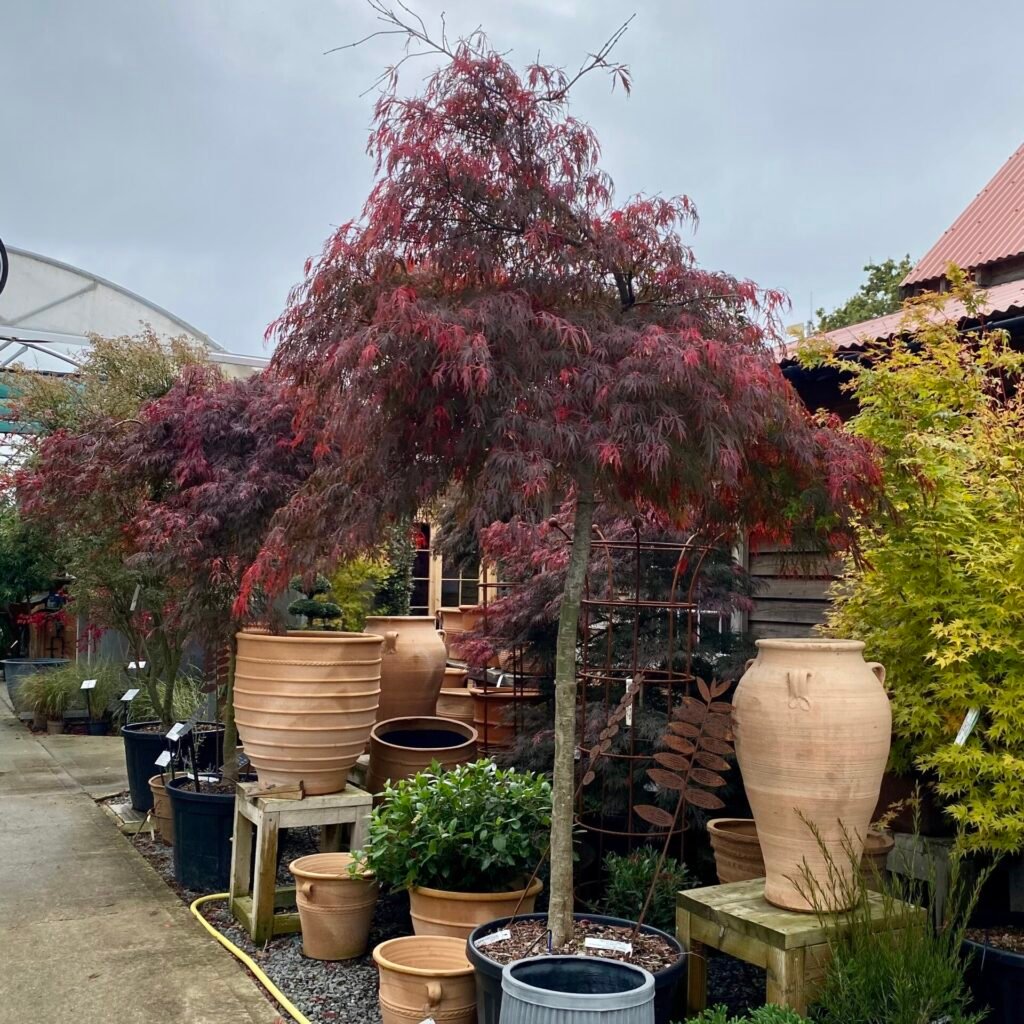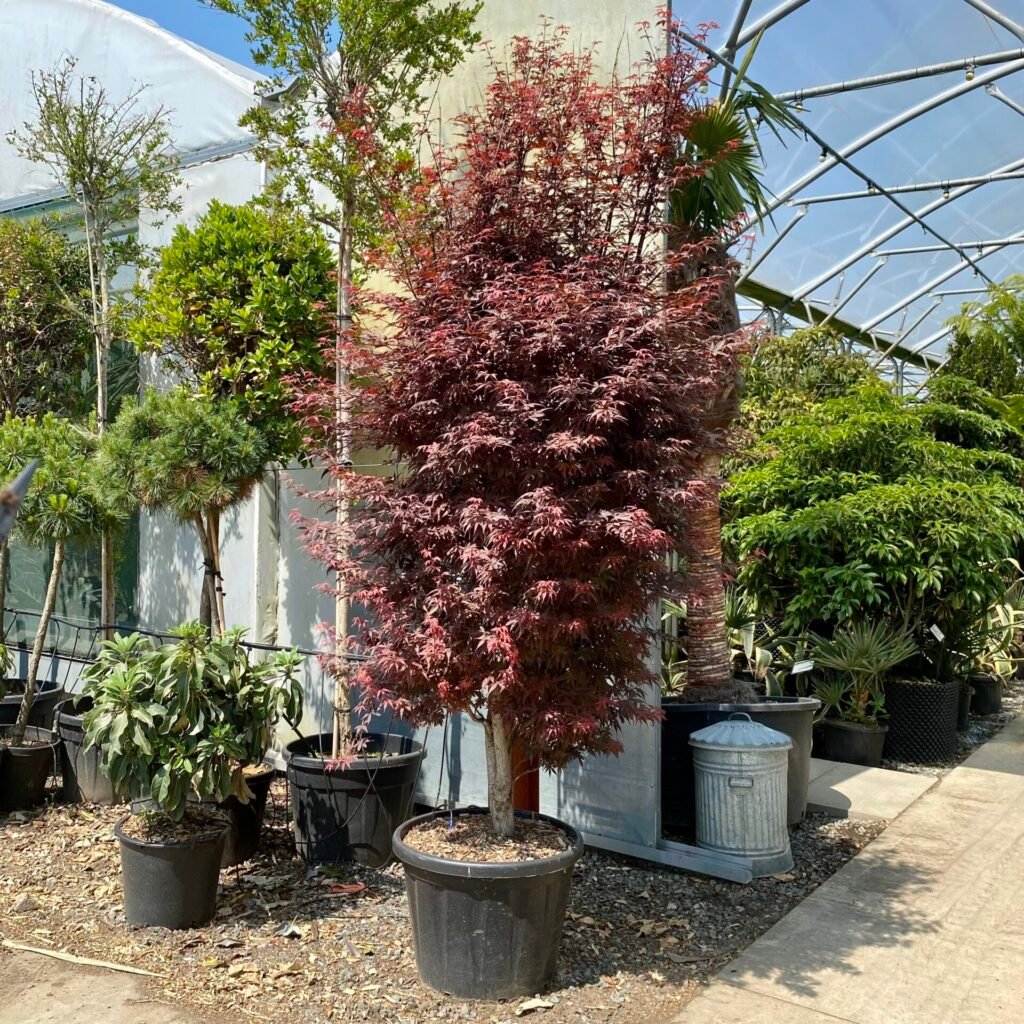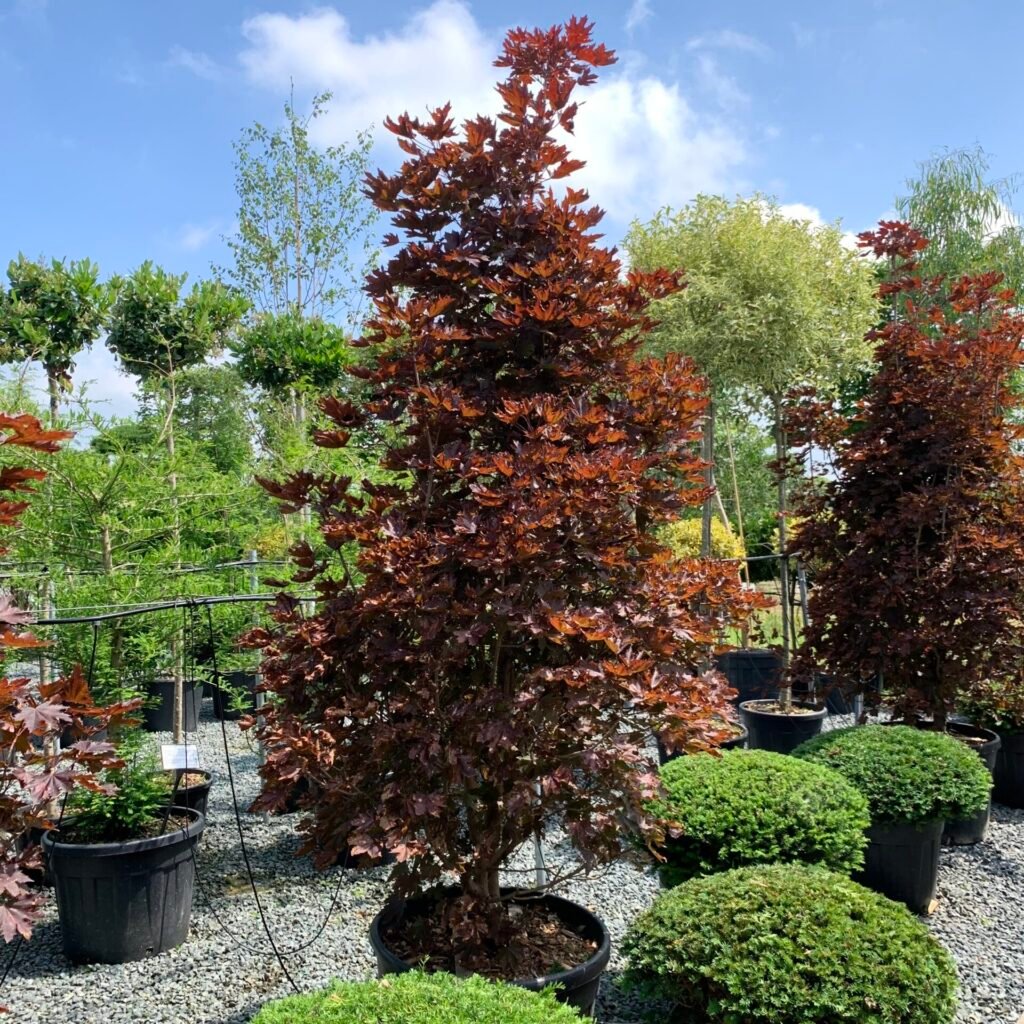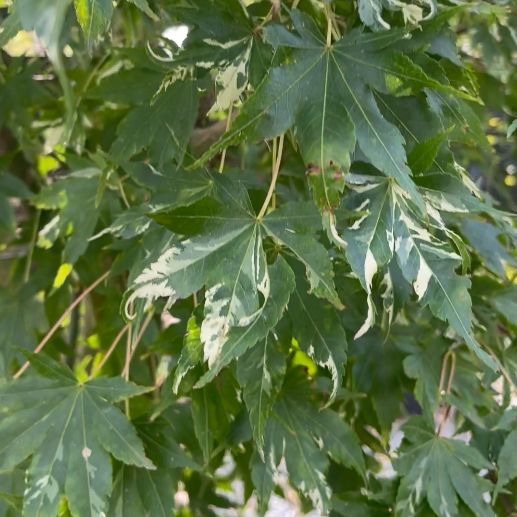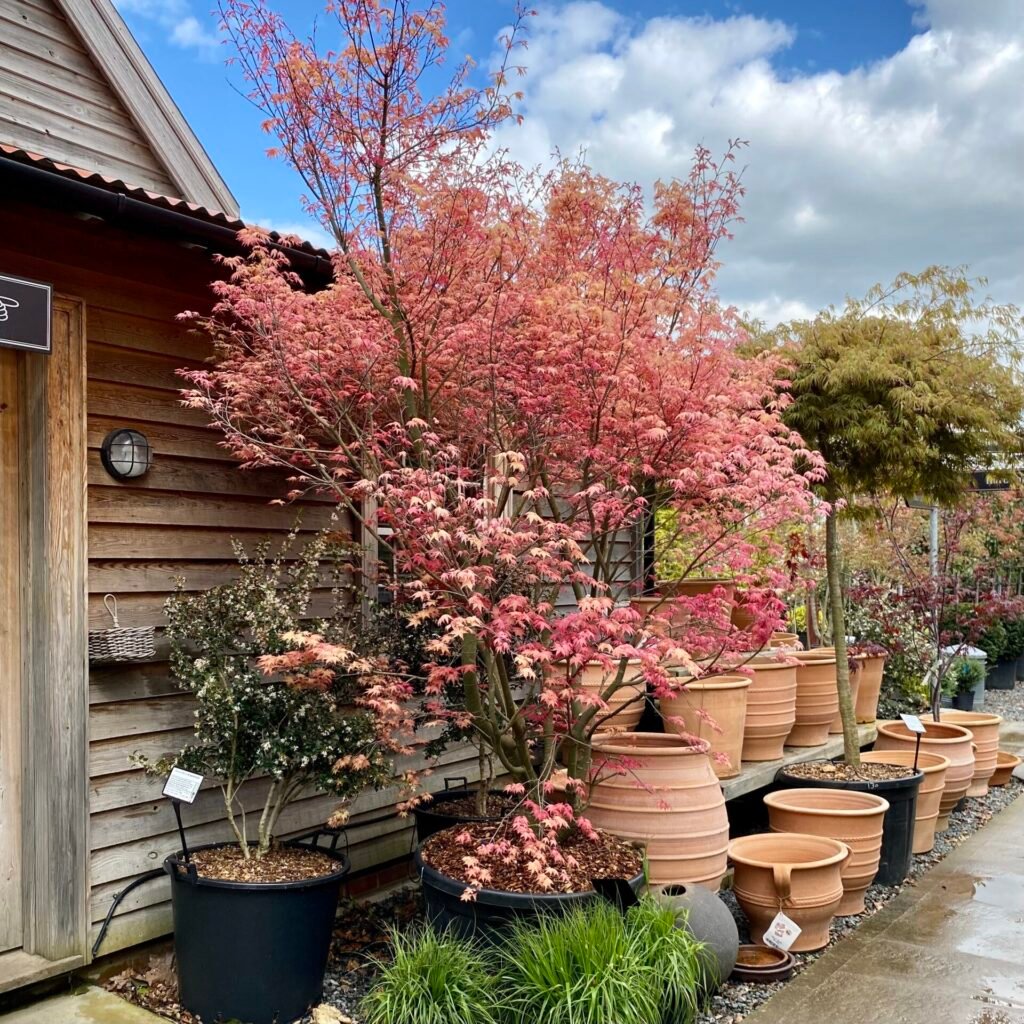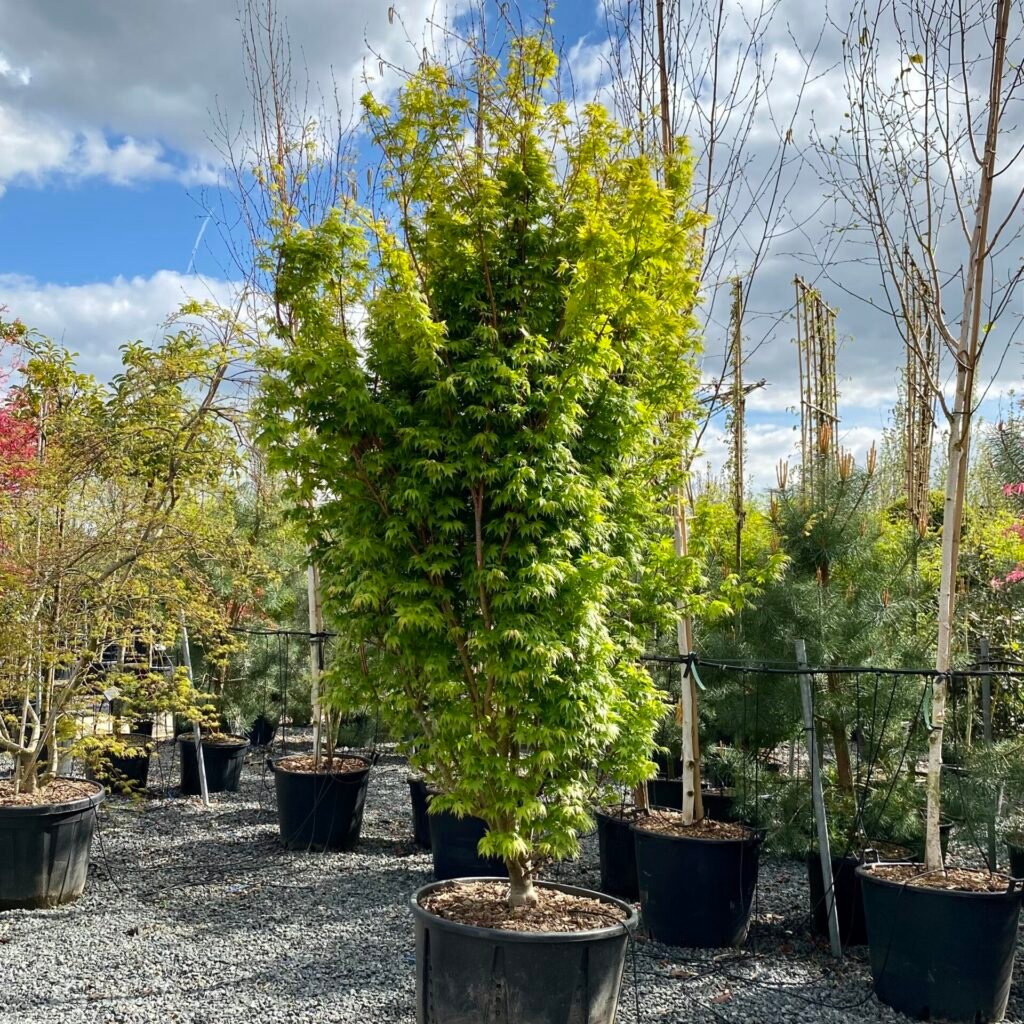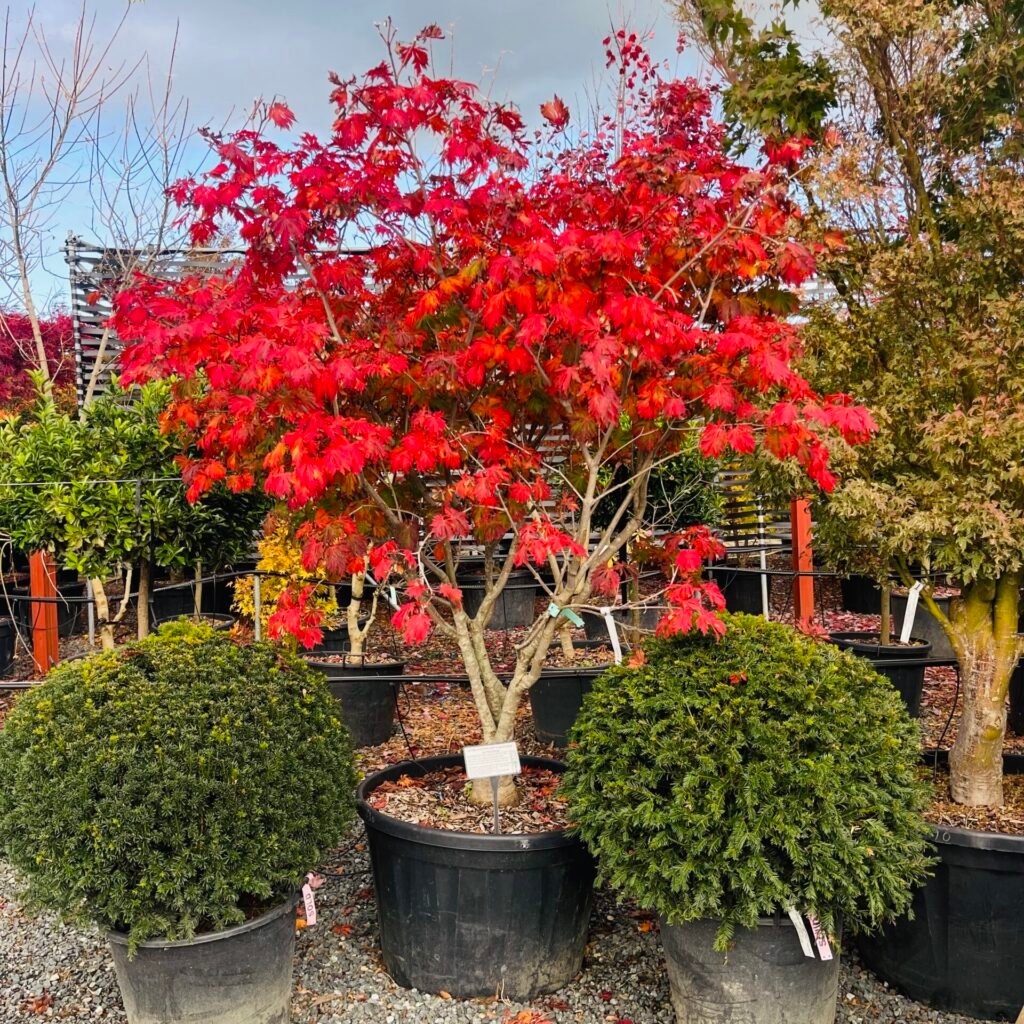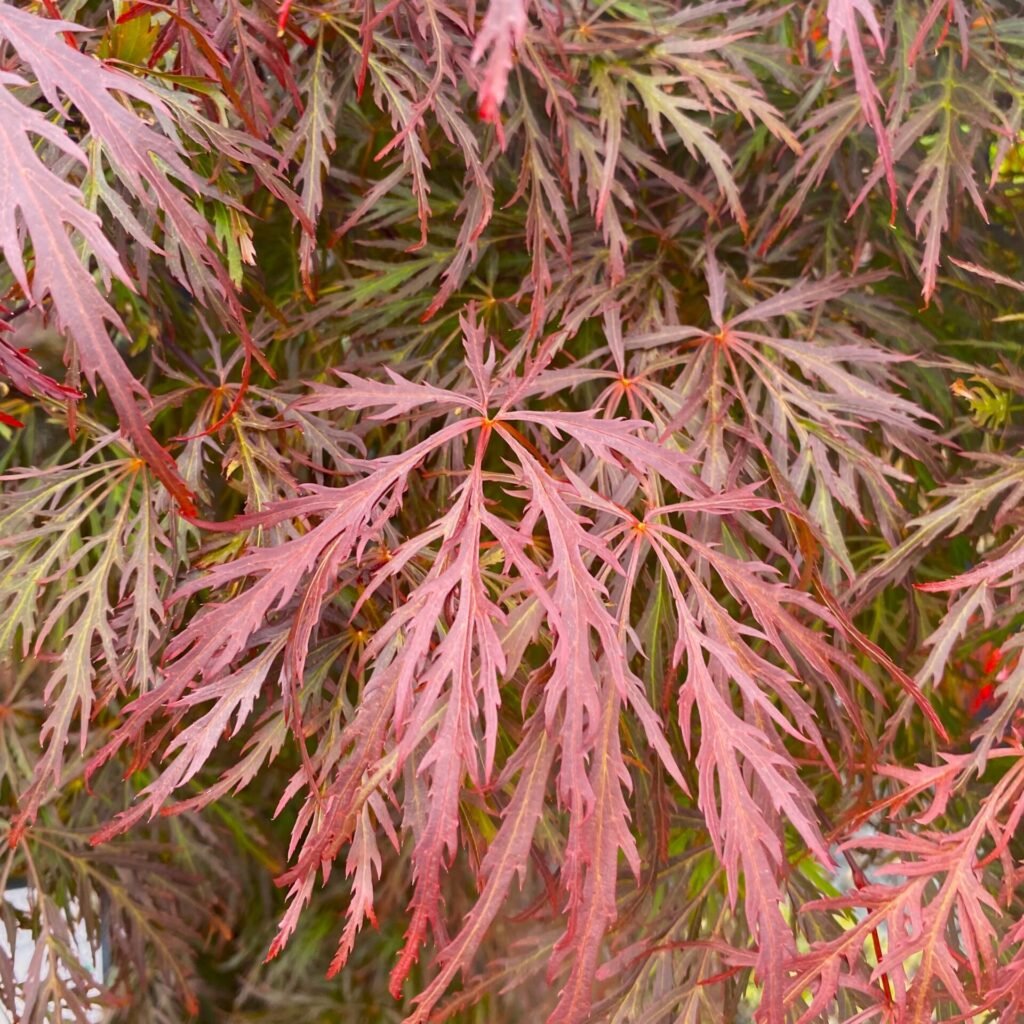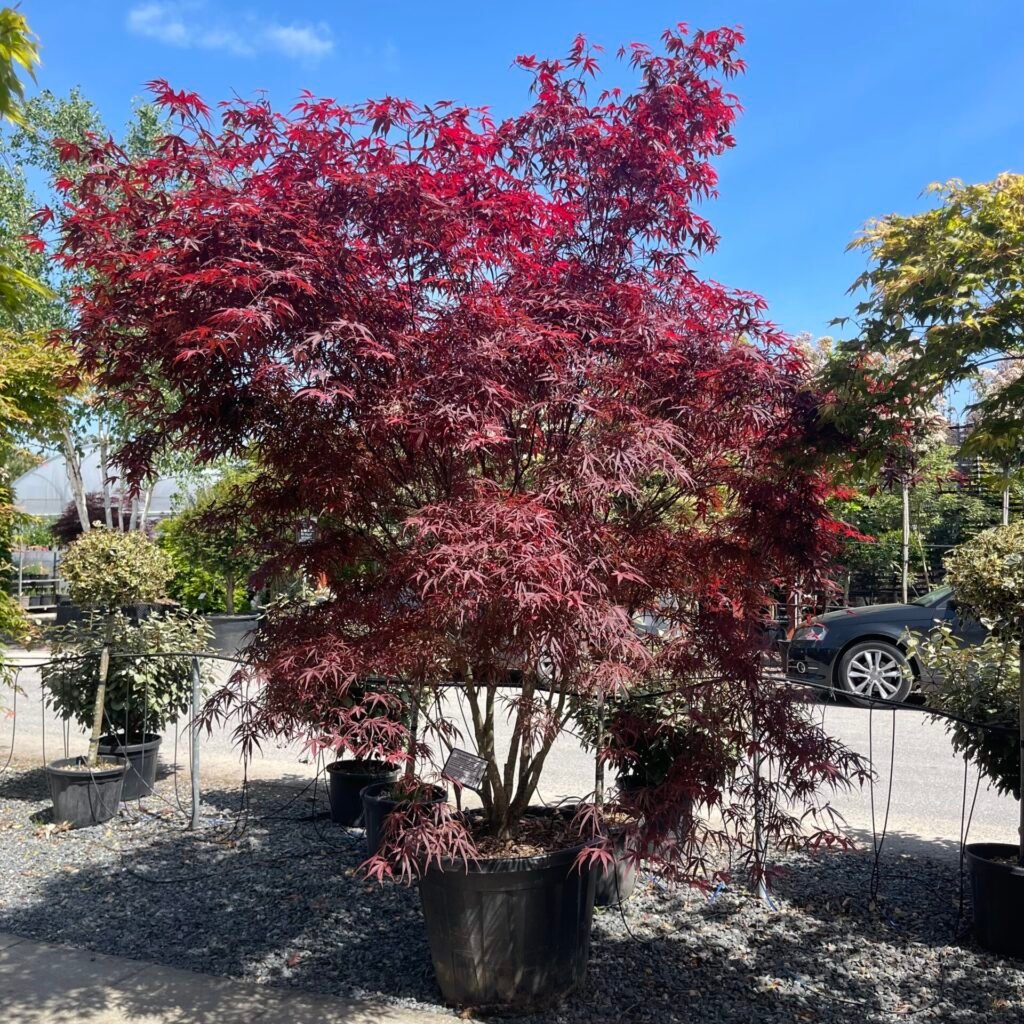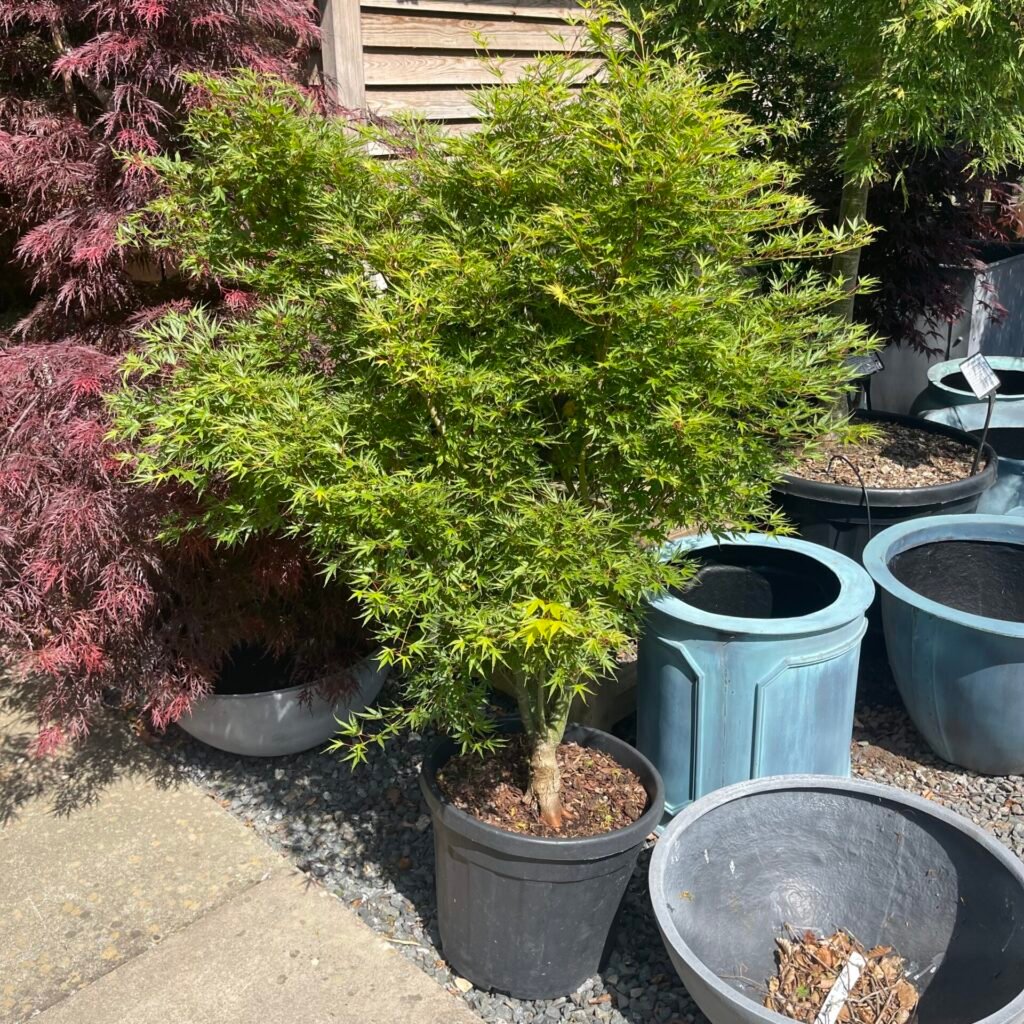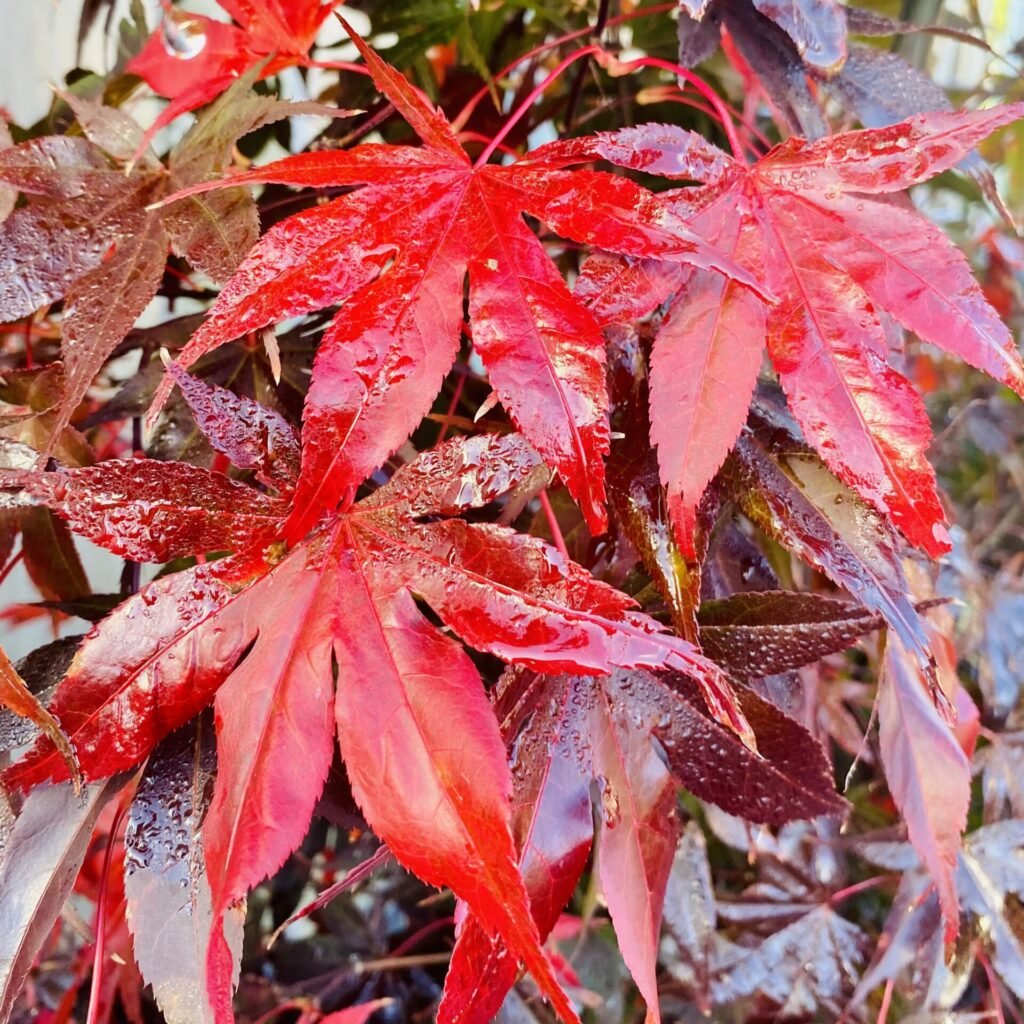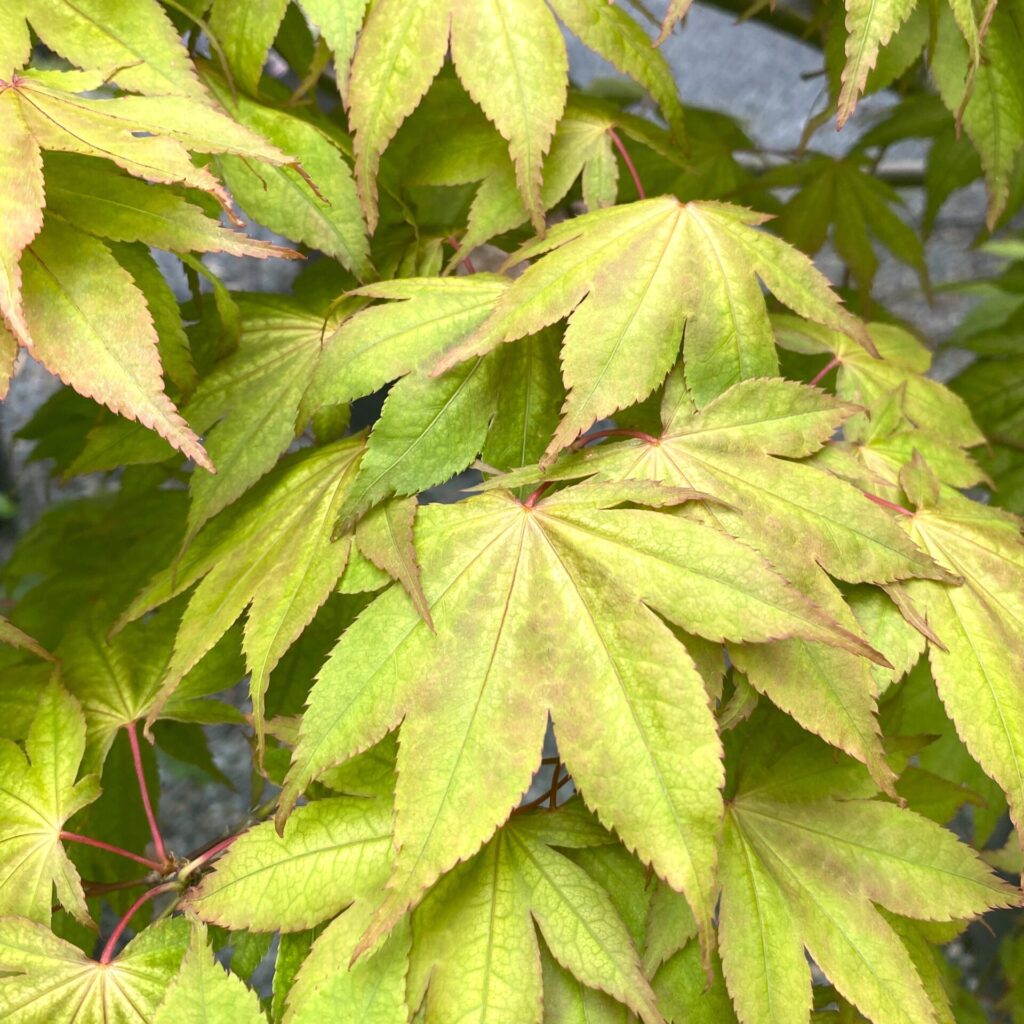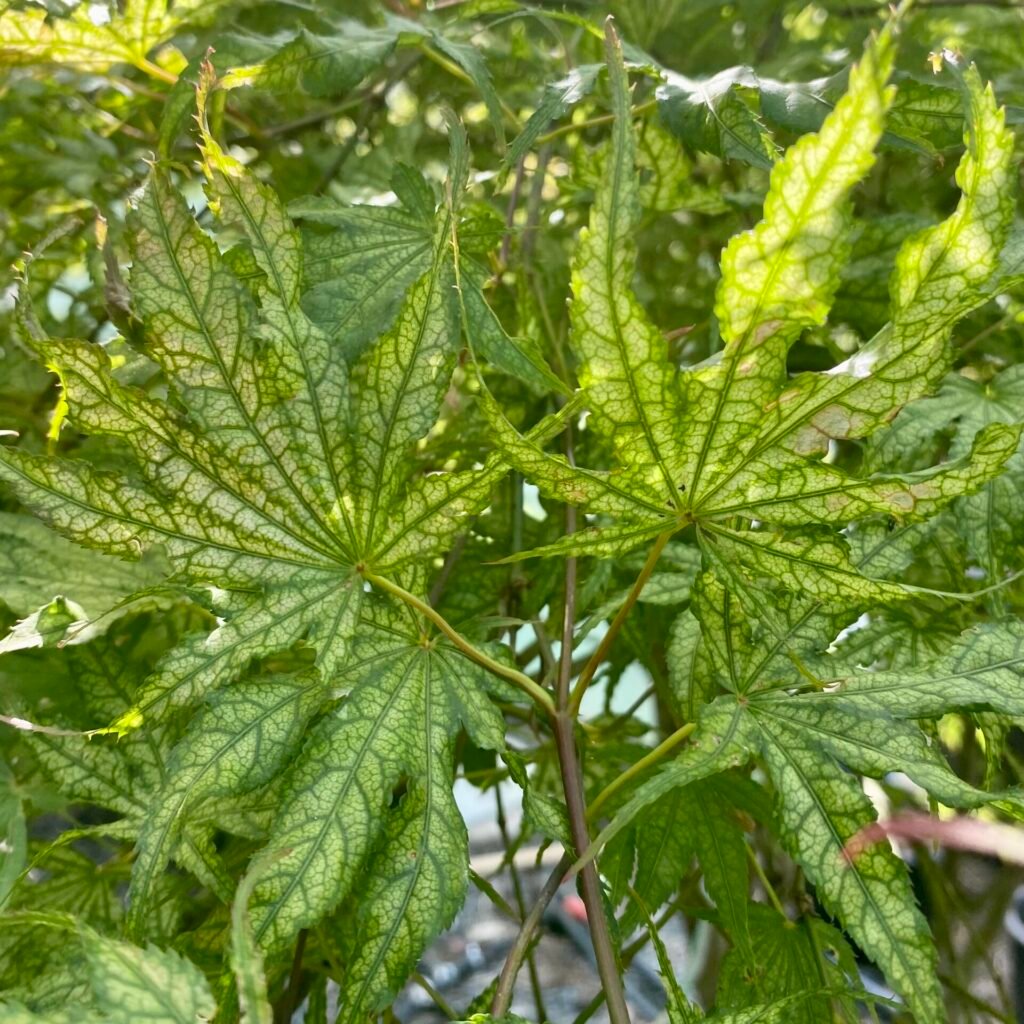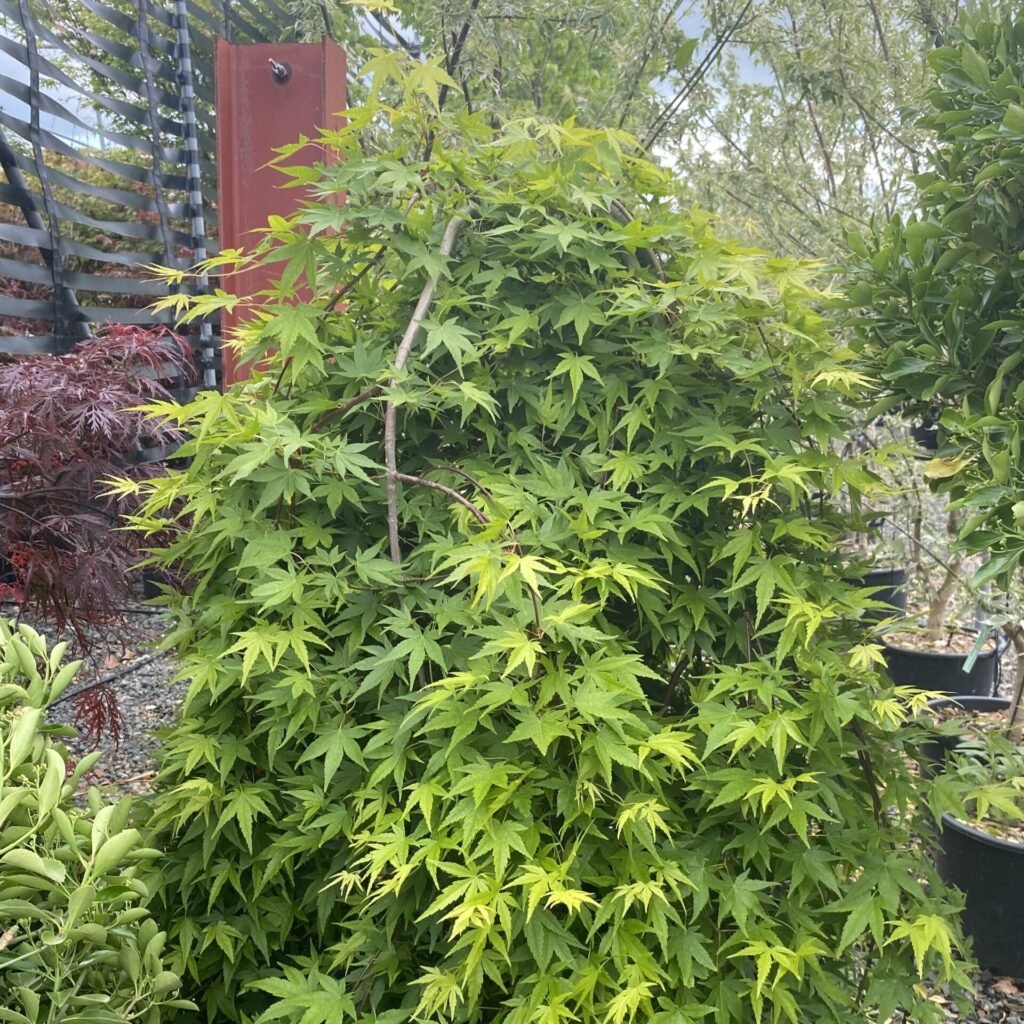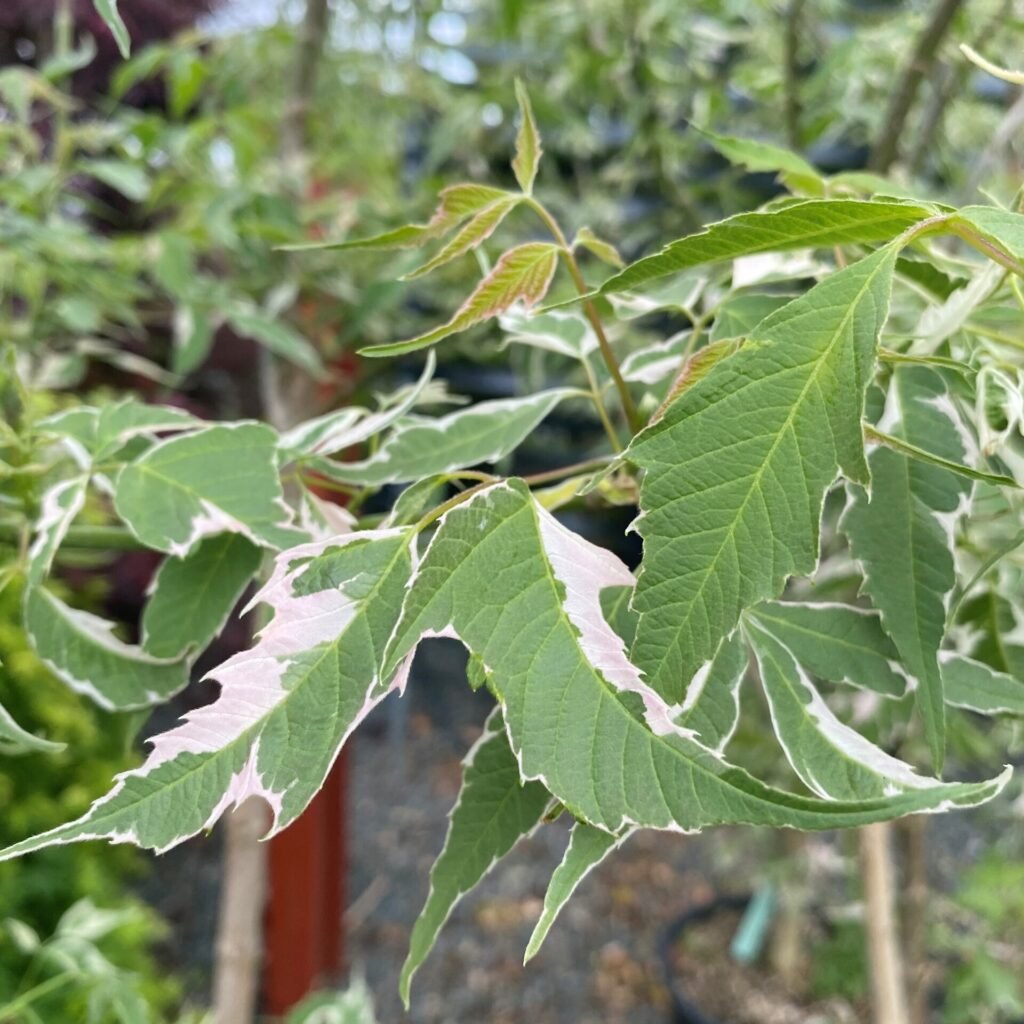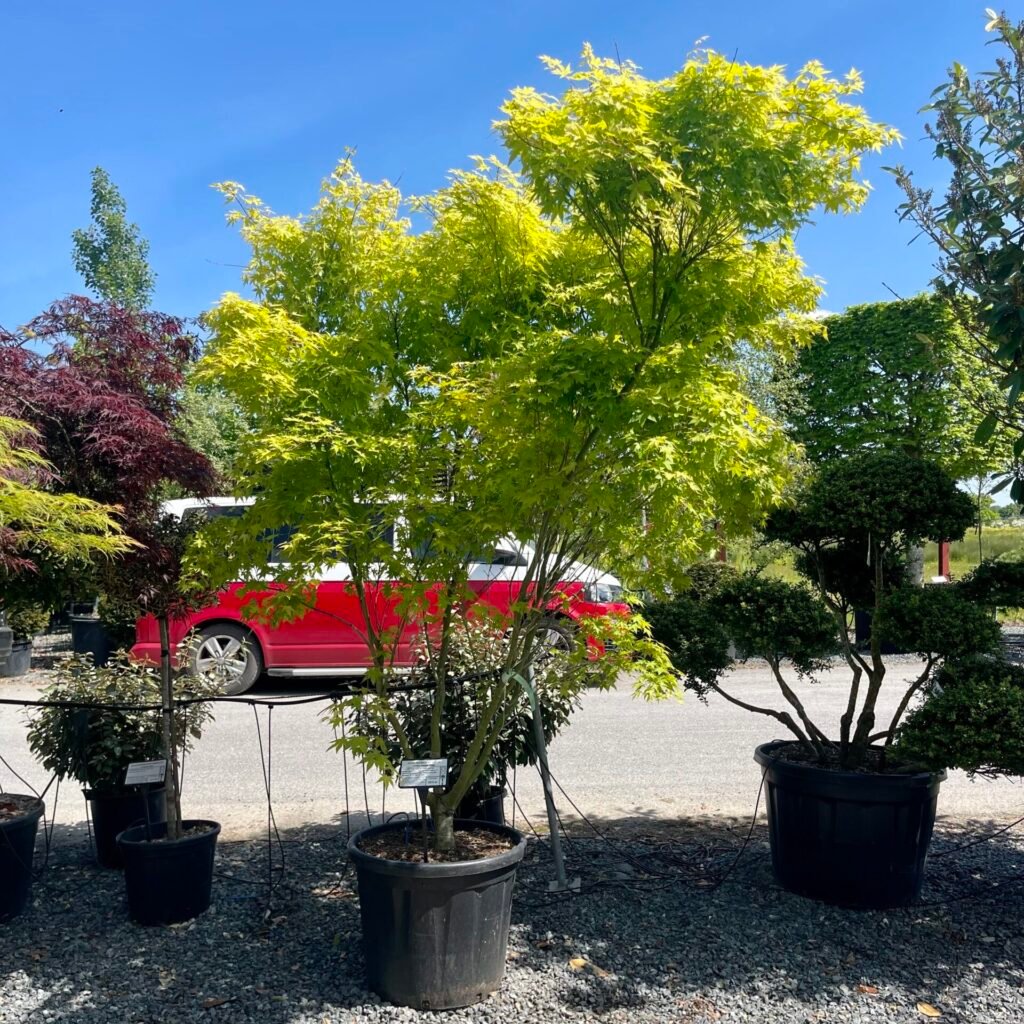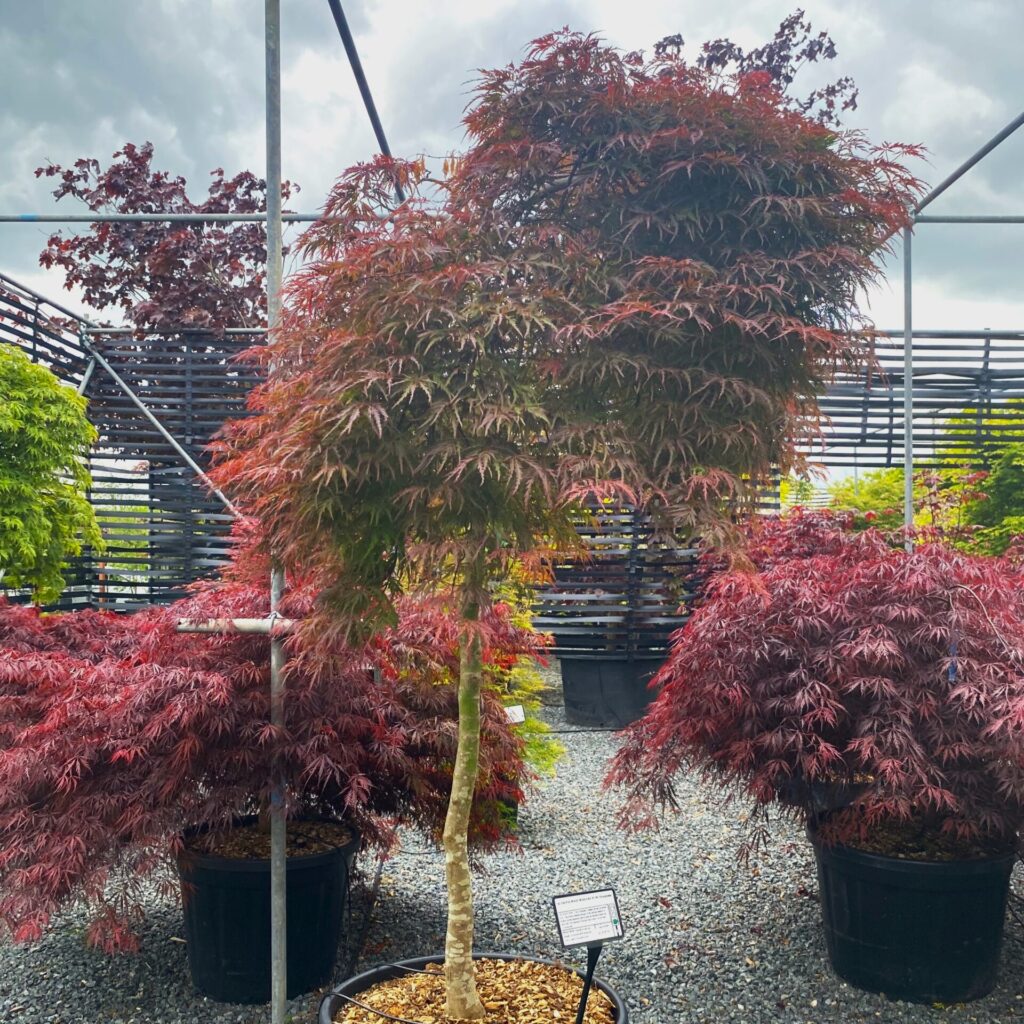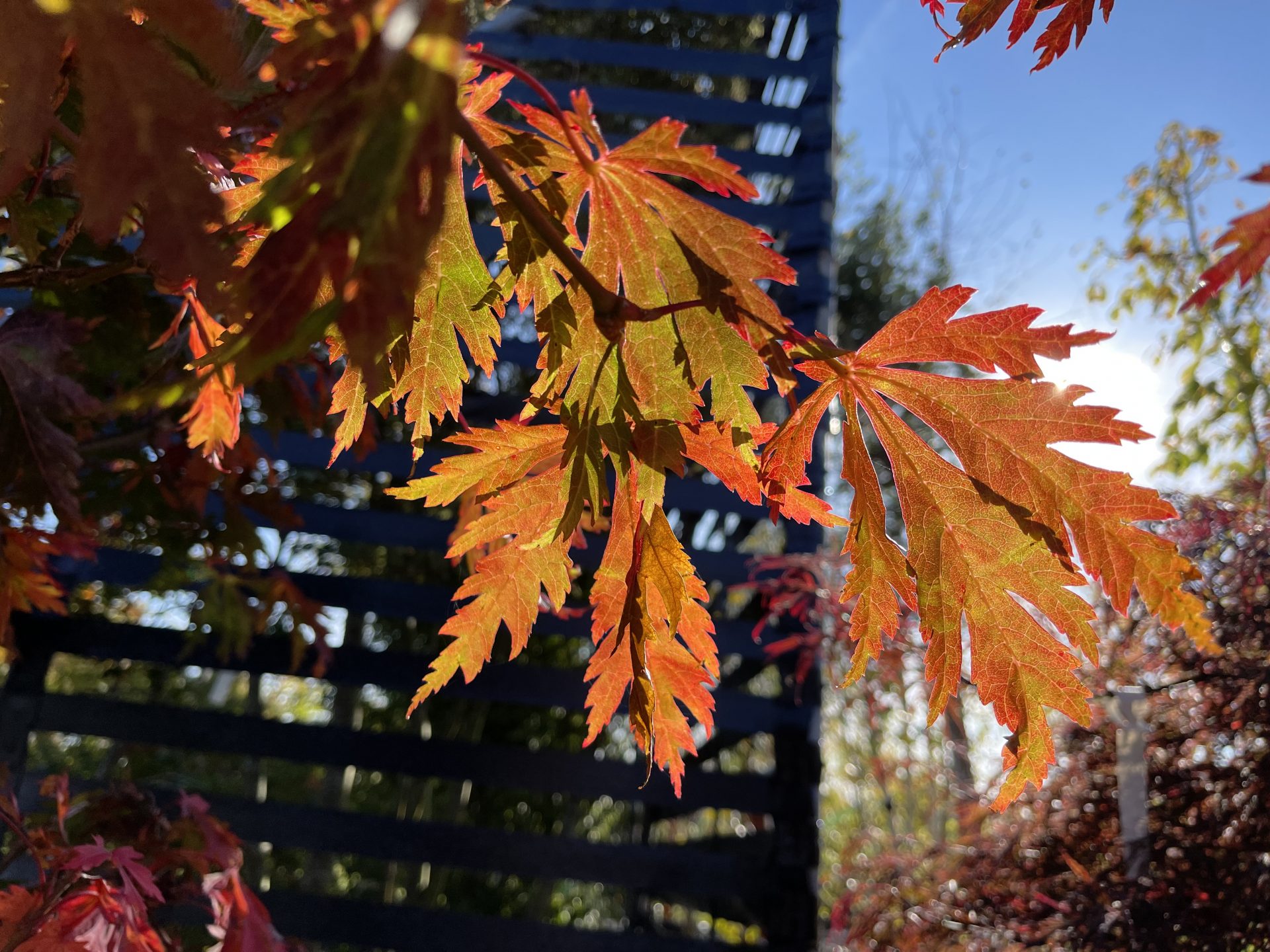
Acer House
Bask in the flurry of colour
The Acer House
We’ve recently completed work building a large shade house. Designed as a place to keep our ever expanding collection of large Acers, it’s a wonderful place to go hunting or just bask in the flurry of colours, leaf shapes, stems and trunks. The Acer House was finished in 2022 spanning over 450 square feet and is bursting with a vibrant myriad of colour right through to the end of November each year.
Acers are deciduous trees and chose to drop their leaves at different times either when approaching or late on in autumn. This habit depends on their variety. We keep an extensive collection of our favourite Japanese maples (Acer palmatum) which hold onto their colour late into autumn. They are generally slow-growing and come in a range of forms such as weeping, upright and spreading.
Our Acers
Differing varieties of Acer palmatum are recognisable by their lobed foliage and subtle tracing veins. The leaves are smaller than traditional maples and many varieties have deeply dissected, almost feathery leaves that might not be immediately recognised as an Acer. They make an ideal choice for smaller gardens, courtyards and pagodas. Potted specimens can transform a shady site and provide a defining vibrant mood to a garden design.
Japanese maples are marvels all year round. If you choose the right variety, beautiful, delicate foliage will emerge in spring, show off in summer and transform to flaming colours in autumn. But that’s not all. In winter, many varieties will have a unique architectural form due to the way their branches have been trained and others will have textural, peeling or bright colourful bark.
Designing With Acers
Our Acers transform any style of garden providing solid structure and interest all year round. Japanese maples are wonderful companions for plants in an evergreen garden design. Flashes of colour from Acers perfectly off-set the different shades of green. Their looser shapes and canopies help draw together a wider fusion of exciting planting shapes where they can be positioned to punctuate borders or create focal points.
Of course, as the focal point(s) of a more specialised Japanese garden design they will bring a sculptural free flowing form, feathery texture and soft ebbing movement to contrast with the sculpted serenity of cloud pruned Niwaki trees and other topiarised forms. Alternatively you could be dreaming of a garden space where Acers govern on their own in a more formalised way. Perhaps as provocative stand alone centre pieces in their own bed, or in pots, or on a patio, or a mezzanine or even running as an avenue. The versatility of an Acer is extensive and the visual impact guaranteed.
Caring for you Japanese Acers
Japanese Acers grow best in a sheltered position with dappled shade. Red and purple-leaved varieties need some sun to develop their dark hues fully. Variegated Japanese Acers need partial shade to prevent the afternoon sun from scorching the foliage. Green-leaved forms tolerate full sun, but are best in dappled shade as very bright conditions can sometimes cause scorch. Yellow-leaved varieties and some of the red forms are most at risk of scorching, but this is not always obvious, because usually, the only sign of too much heat is some browning of the leaf tips.
Can you prune an Acer?
Most Japanese Acers require no pruning — they are ‘self-cleaning’ — although we like to cut out dead tips and stems and keep them creatively well-maintained. Acers heal quickly – even after a more dynamic branch pruning session. You can safely prune them as much as you wish but don’t do it in spring when the sap is rising.
Our Favourite Acers For Garden Design
Acer Palmatum ‘Ueno Yama’
‘Ueno Yama’ begins producing its seasonal colour earlier than most maples, being one of the first to leaf. These early five-lobed leaves dazzle in a bright yellow hue with orange edging and bring a welcome change from the dull winter landscape. As summer approaches the leaves transform into a bright green, often retaining their orange edge. During autumn the foliage turns into a bright orange-yellow display.
Acer palmatum ‘Sango Kaku’
‘Sango Kaku’ is attractive throughout the year. The leaves are a pinkish green with young deeply lobed new foliage in the spring. Small red flowers often appear in spring/summer. Leaves turn a lush green in summer and then a soft yellow with burnt orange highlights in autumn. In winter the bare branches, triggered by a cold spell, turn vibrant coral pink-red until the tree ‘re-leafs’ in spring.
Acer palmatum ‘Shinonome’
‘Shinonome’ is a small tree up to 4m high with an open, arching habit and seven-lobed leaves. The young leaves emerge bright orange-red in spring, ageing to deeper red and then green with a deep red overtone and green veins in summer. In autumn, they turn orange-red again with tiny, purple-red flowers in spring followed by red fruit in late summer.
Acer palmatum ‘Arakawa’
Noted for its remarkable bark, ‘Arakawa’ is a vigorous deciduous tree of upright habit, adorned with a delicate foliage of palmate leaves, each with 5-7 slender tipped lobes. Emerging fresh green in spring, the foliage retains its colour throughout summer before gradually changing to brilliant golden-yellow in the fall.
Acer palmatum ‘Hogyoku’
‘Hogyoku’ is mostly known for it’s bright orange autumn colour. In warmer climates it sometimes has yellow leaves that have orange and red washed across them. It matures into a compact stocky tree over time and is somewhat slower growing than other similar trees. The thick green leaves have a little flip or curve to the leaf margins giving the tree a wonderful texture.
Acer palmatum ‘Shishi-gashira’
‘Shish-gashira’ is a dense bushy shrub of distinctive upright habit, with masses of small, dark green, lobed leaves turning soft orange in autumn. The name means ‘Lion’s Head’ which refers to the Acer producing thick bunched-up, curled leaves giving a unique ‘Lions Head’ appearance.
Acer palmatum dissectum ‘Tamukeyama’
‘Tamukeyama’ is a small, spreading Japanese Acer that has beautiful, cascading purple/burgundy leaves, with the colour lasting all the way from spring right through to autumn. Autumn brings a new vibrancy to the tree as the leaves adopt striking shades of bright, fiery reds.
Acer palmatum ‘Ukigumo’
‘Ukigumo’ is a deciduous shrub or small tree with a most outstanding variegated foliage. Emerging pale green in spring with white splodges and shades of soft pink at the edges. The medium-sized leaves are very deeply divided and radiate openly. Later in season, the pink fades away and the foliage turns yellow-orange in autumn before shedding.
Acer palmatum dissectum ‘Seiryu’
Acer ‘Seiryu’ is a medium-sized deciduous shrub with small, deeply cut, dissected leaves. The delicate spring foliage emerges lime-green with reddish tips. It matures to pale green with reddish edges in summer, before turning a spectacular gold and pale yellow with a suffusion of orange and crimson in autumn.
Suitable Evergreen Plants For Acer Garden Design
Hebe sutherlandii
Hebe sutherlandii are perfect for keeping neat, compact and rounded. It is a hardy, compact evergreen shrub. The small grey-green oval leaves and contrasting purple stems are offset by attractive white flowers that bloom in summer. This Hebe adds a soft but formal addition to a design and contrasts well with darker foliage. They’re incredibly reliable but need light and well-drained soil.
Taxus baccata
Taxus baccata (Yew) look eminently ‘posh’ clipped as balls, blobs and cones. A native European plant, it has been a stalwart of formal gardens for centuries. With their compact and solid habit you can give them crisp lines and defined trims. If you then plant a number to create a blobbery, it can then surround an Acer planted as a centre piece. Grows in light shade or sun but needs reasonably good drainage.
Hebe paviflora ‘angustifolia’
Hebe paviflora ‘angustifolia’ is the perfect fluffy clipped pillow and fantastically tactile. Hebes have it all: structural, evergreen, any size and flowering throughout the year.
They have delicate long leaves of emerald green that will last through all but the harshest winters. In mid summer, they naturally produce a copious crop of white flowers. Frost hardy in most situations and will grow absolutely anywhere.
Cryptomeria japonica ‘Globosa Nana’
‘Globosa Nana’ is fluffy. Very fluffy and lumpy. Evergreen, coniferous, slow growing – to 6ft after many years. Sun or shade but greener in a bit of shade. Can be clipped if thought necessary. They might reach 6 ft x 6 ft after 15 years or more but can be trimmed with shears in the spring.
Phyllostachys bissetii
Phyllostachys bisetii is a dense, vigorous, evergreen bamboo which forms a spreading clump of dark green canes, (lighter when in full sun), with narrow, mid-green leaves. Phyllostachys bissetii stands out from the crowd because it excels at what it does – it is extremely hardy and tolerant. It is one of the freshest looking bamboos at winter’s end.
Euonymus fortunei ‘Kewensis’
‘Kewensis’ is a neat shrub with tiny, leathery green leaves, that can gain dark red hints in autumn. It forms a dense mat rooting into the ground which is great groundcover. Each individual plant layers itself up on itself forming a kind of wave, a peak, or pyramid. Exciting and unusual to plant underneath Acers in any style of Garden Design.
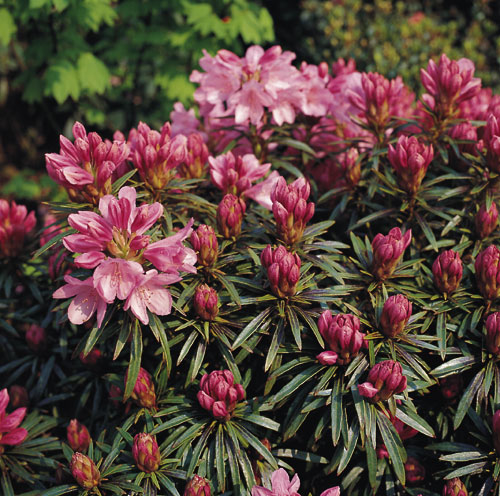
Rhododendron ‘Graziella’
Rhododendron ‘Graziella’ is a fully hardy, evergreen Rhododendron producing long, narrow, dark green leaves that provide interest throughout the year and look amazing in winter under the structural branches of an Acer. The narrowness of the leaves and their star-like arrangement around its shoots is what gives this plant its unique appeal. Pink, bell-shaped flowers appear during late spring and early summer.
Azalea japonica
Azalea japonica is a small heath shrub that provides evergreen, bushy growth. Its unique appeal however, is the copious blooming of very beautiful flowers ranging from pink to red, purple and white. It has a compact growth habit ideal for growing in an acidic soil at the front of a border with an Acer. Will provide density and bushiness in winter when the Acer’s leaves have dropped.
Camellia sasanqua
Camellia sasanqua is a graceful and airy winter flowering Camellia. They are slow growing and tend to be abundant. Evergreen Sasanquas have beautiful dark green foliage and a more spreading growth. They bring uplifting colour and fragrance to the garden from autumn right through to early spring – exactly when it’s most needed.
Our Other Acers
Acer palmatum ‘Osakazuki’
‘Osakazuki’ has seven lobed green foliage in spring and summer, transforming into a blaze of fiery scarlet in autumn. Many believe they have the most intense, long lasting scarlet autumn colour of all the Japanese Acers. Ideal for a smaller garden, yet still capable of creating autumn drama in a large garden.
Acer palmatum ‘Emerald Lace’
‘Emerald Lace’ is a wonderful Acer with a slightly unsettling cultivar name. ‘Emerald Lace’ might sound like a Jackie Collins novel but it certainly doesn’t look like one. With a lightness of form and a kind of architecture that appears to float, this hardy deciduous Acer responds to spring with a punchy, citrus-green flourish.
Acer palmatum ‘Elegans’
‘Elegans’ is an upright and open tree 2 to 3 metres tall and 2 metres wide. The leaves emerge a pinky green, change to green in the summer and become an orangey red before falling in the autumn. A plant for full sun to light shade as long as the roots are in cool, moist soil with good drainage. Acid to neutral conditions and out of strong winds.
Acer palmatum ‘Atropurpureum’
‘Atropurpureum‘ is a beautiful purple leaved plant can be grown as a small tree, to about 5m, or a large shrub. The best spring and summer colour is seen on plants grown in full sun, then before falling in the autumn, the foliage turns a flaming crimson.
Acer palmatum ‘Orange Dream’
‘Orange Dream’ is a lovely, slow-growing, hardy and open-headed Japanese Maple which can reach 3m x 3m. The leaves emerge orange, mature to green and take on red and orange colours in autumn. Best grown with their feet in the shade and head in the sun in well drained, moist, neutral to acid soil, protected from cold and drying winds.
Acer palmatum ‘Dissectum Nigrum’
‘Dissectum Nigrum’ is a beautiful, hardy, deciduous Acer with deeply dissected foliage. The leaves emerge a silvery-red, mature to a deep, rich, burgundy in summer and give good colour in autumn. Slow growing, it can achieve 2m to 3m over 20 or so years with softly arching branches.
Acer palmatum ‘Summer Gold’
‘Summer Gold’ is an upright, rounded habit. This has light green leaves that turn a golden yellow in the summer and a deeper yellow in the autumn. Ultimate height 1.8m. Sun or light shade on lime free soil (reasonably well drained). Avoid strong winds.
Acer palmatum ‘Dissectum Viridis’
‘Dissectum Viridis’ is a small deciduous tree with finely cut green foliage with gorgeous autumn colour. Beautiful all year, very shapely, very Japanese. Very moundy. Best grown with their feet in the shade and head in the sun in well drained, moist, neutral to acid soil. Protect from cold drying winds.
Acer platanoides ‘Globosum’
‘Globosum’ is a dwarf form of the Norway Maple (Acer platanoides) grafted onto a 6ft trunk. The effect is neat, formal and manageable. The top can grow to almost 20ft across but the whole top can be clipped occasionally (in late winter before the new growth begins) to retain the formal and manageable look.
Acer palmatum dissectum ‘Crimson Princess’
‘Crimson Princess’ has beautiful red, finely divided leaves on arching branches. The crimson summer foliage will take on flaming red hues before falling in the autumn. This hardy tree can reach 1.5m in height with a spread of 2.5m. The crimson feathers will decorate your garden as they fall, revealing beautifully complex and architectural stems.
Acer palmatum ‘Beni-Komachi’
‘Beni-Komachi’ as the name implies, is a hardy, deciduous tree that has vibrant red leaves in the spring, maturing to burgundy edged and splashed summer foliage before the scarlet autumn colouration develops. Slow growing to 4m x 4m.
Acer Palmatum ‘Bi-hoo’
‘Bi-hoo’ is a brilliantly hardy and deciduous tree for year round interest. The stems are a vibrant orange-yellow in the winter and in the spring the new leaves are salmon coloured, followed by yellow-green summer foliage and butter-yellow autumn colours. It grows to 3m.
Acer palmatum ‘Dissectum flavescens’
‘Dissectum flavescens’ is an acer with very bright yellow and green leaves in spring and early summer. The leaves darken considerably and in autumn the foliage is bright yellow and can be tinged with orange. Can reach up to 2.5m.
Acer palmatum ‘Skeeter’s Broom’
‘Skeeter’s Broom’ is a narrow, upright habit. The leaves emerge bright red maturing to a deep purple-red in summer before turning ruby red in autumn. Ultimate height and spread in 10-20 years is 1.5-2.5m.
Acer platanoides ‘Crimson sentry’
‘Crimson Sentry’ is hardy and compact, this is a handsome columnar tree growing to 8m x 3m over 25 years. In spring it is covered in yellow flowers, followed by bright red young foliage, maturing to crimson in the summer and brilliant red before the leaves fall.
Acer palmatum ‘Asahi-Zuru’
‘Asahi- Zuru’ is a semi-dwarf beautifully variegated Acer. The stems on the new growth are red and the foliage comes through a combination of white and pink then into a deep green. They sometimes have an entirely white or pink leaf. Autumn foliage is a stunning blend of oranges and reds.
Acer palmatum ‘Deshojo’
‘Deshojo’ is a spectacular deciduous Acer and one of our favourites from Japan. Vibrant sorbet pink leaves in the spring turn to green with fuchsia-kissed margins during the summer months. Finally, the leaves turn bronze and scarlet in an autumnal flourish.
Acer palmatum ‘Red Wood’
‘Red Wood’ has wonderful red stems on this pretty round-headed, deciduous tree with deeply divided palmate leaves. Even 3 or 4 stems retain their red colouration. The foliage is soft green in summer, turning yellow in autumn. About 3m over 20 years.
Acer japonicum aconitifolium ‘Full Moon’
‘Full Moon’ is a slow growing small tree with green leaves and a distinctive spreading habit followed by a domed shade in maturity. Bright red autumn colour. Can reach up to 30ft after 50 years. Best grown in well drained, moist, neutral to acid soil in light shade. Protect from cold and drying winds in early spring.
Acer palmatum ‘Garnet’
‘Garnet’ is a deciduous bush or small tree with deep purple leaves in the summer followed by a brighter red autumnal colour. Best grown with their feet in the shade and head in the sun in well drained, moist, neutral to acid soil, protected from cold and drying winds. Prune lightly for health but never when the sap is rising in the spring.
Acer palmatum ‘Atrolineare’
‘Atrolineare’ is a lovely mid-sized Acer that can grow to 3m x 3m over 20 years. The slender leaves emerge dark red, take on bronzy overtones in the summer before developing flaming autumnal colouration. Happy in sun to partial shade in moist but well drained, acid to neutral soil. Keep out of cold winds and off north facing sites.
Acer palmatum ‘Crippsii’
‘Crippsii’ is a slow growing, Japanese Acer to 10ft after 20 years, forming a beautiful mound. Emerald green leaves in summer turning to wild orange and yellow in autumn. Sheltered from strong winds in sun or partial shade. Avoid chalky soil.
Acer palmatum ‘Bloodgood’
‘Bloodgood’ leaves emerge pale-ish red in spring, are dark red all summer and go pale-ish again in autumn. It’s one of the classic slow growing Japanese Maples – 15ft after 20-25 years. Any reasonably well drained soil (but not chalk) but they need light or partial shade out of strong winds.
Acer palmatum ‘Reticulatum Red’
‘Reticulatum Red’ is a large shrub or small tree, 4m in height with an upright and open habit. The palmate leaves emerge salmon pink then darken to a textured red with the classic network of veining, finishing the year in a blaze of scarlet foliage. A plant for full sun to light shade as long as the roots are in cool, moist soil with good drainage.
ACER PALMATUM ‘PEACHES AND CREAM’
‘Peaches and Cream’ is a wide spreading, round-headed tree that grows slowly to 4m over 40 to 50 years. The leaves emerge creamy green with very visible deep green veining and red margins, developing golden-orange colours in the autumn. Contact us for plant availability and sizes.
Acer palmatum ‘Ryusen’
‘Ryusen’ is a beautiful hardy, deciduous Acer with small bright green palmate leaves turning vivid orange in the autumn. The weeping habit gives a spread of up to 3.5m across and 2m in height over 20 years. Best in dappled shade, out of strong winds, on an acid to neutral soil that is moist but well drained.
Acer Negundo ‘Flamingo’
‘Flamingo’ is an interesting little deciduous tree. It has green, white and pink variegation on the pinnate leaves.
Acer palmatum ‘Aureum’
‘Aureum’ is a small deciduous tree with golden yellow leaves that turn red in autumn. A rounded and compact habit. Slow growing and desirable. To 5m after 25 years.
Acer palmatum dissectum ‘Orangeola’
‘Orangeola’ is a beautiful Acer with orange leaves emerging in spring, maturing to bronze and then to an intense orange as they fall. New leaves grow orange throughout all seasons contrasting beautifully with the mature leaves.
Acer platanoides ‘Royal Red’
‘Royal Red’ is a hardy, deciduous tree with dark purple leaves and brilliant red autumn colour. Growing to 12m in height with a wide or conical crown. Clusters of yellow flowers in spring followed by red keys. This acer could be used as a specimen tree, with it’s dark red leaves standing out from the crowd.
The Garden Design Process
Before going any further, here’s a good opportunity to emphasise the nature of the kind of gardens we do. In terms of size, we can design anything from courtyards and city roof terraces, to country homes and estate gardens; no job is too big or small. It could be formal or it could be exotic, but within that spectrum the emphasis will always be on the sculptural: strong, eye-catching shapes, beautiful textures and bold use of plants. It’s all to do with shape, shade, texture and definition – it’s not just about colour. Trying to have an engaging conversation with our owner, Guy, about overly colourful herbaceous borders could be an unrewarding experience; however, get him on avenues, pleached hedges, groves, striking acers, outrageous topiary and serious jungles and things could get interesting. In short, we only use our plants, so if you like the nursery, you’ll like your garden.
We rarely use drawings. The process is organic and customer-centred, with a hands on approach that ensures you’re a part of the journey from start to finish. Below is an outline of the design process.

Before
1. You discuss your ideas with one of the sales team.
2. Our Design Manager, Debbie, will put you in touch with one of the designers.
3. They will visit you for a modest fee, based on their time (including travel).
4. A proposal follows, including a summary of your meeting, plant suggestions and the total cost of the plants, planting and irrigation (where applicable).
5. At this point we will invite you to the nursery to go through the design in greater detail and show you the actual plants that we will be using.
6. If you agree, a planting date is set, the plants are selected and you’re invoiced (just for the plants at this stage).

During
7. The designer and planting team will arrive on the specified day and the plants will be positioned – a bit like designing on the ground, instead of on a piece of paper.
8. Once you’re happy with the arrangement, the beds will be reshaped where necessary and the planting will begin.
9. Once planted, an irrigation system is installed (this is optional, but we always recommend it), new edges are cut, mulch is applied and everything is left looking lovely.
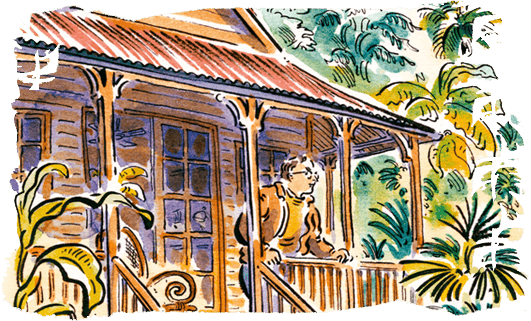
After
10. You’re invoiced for the planting, irrigation system, mulch, etc., and left in peace to enjoy your garden.
11. We remind you that it doesn’t necessarily end there: creative maintenance, plant advice and horticultural expansion are all right up our street.

